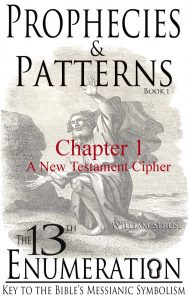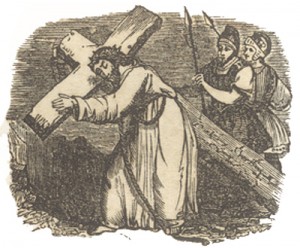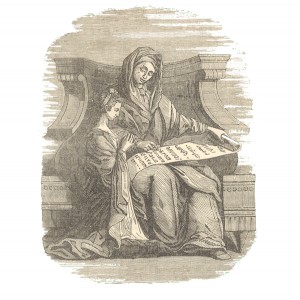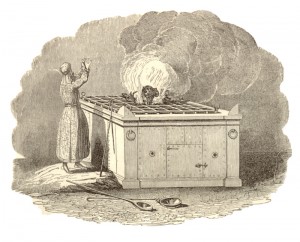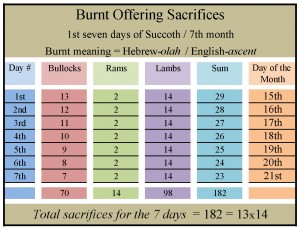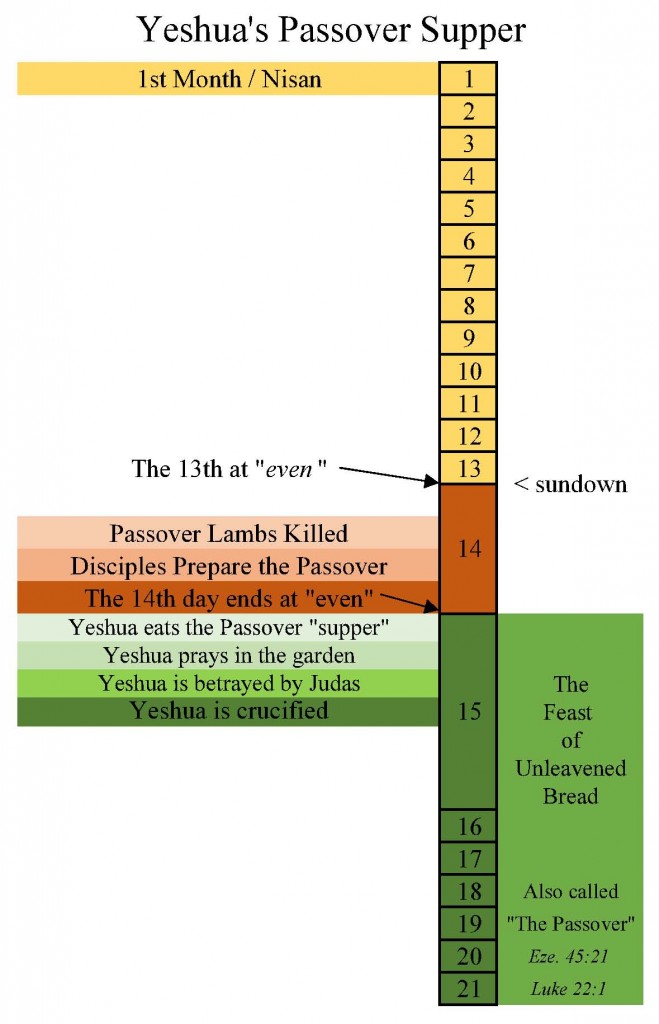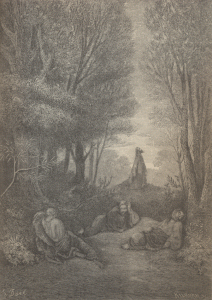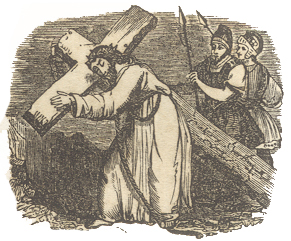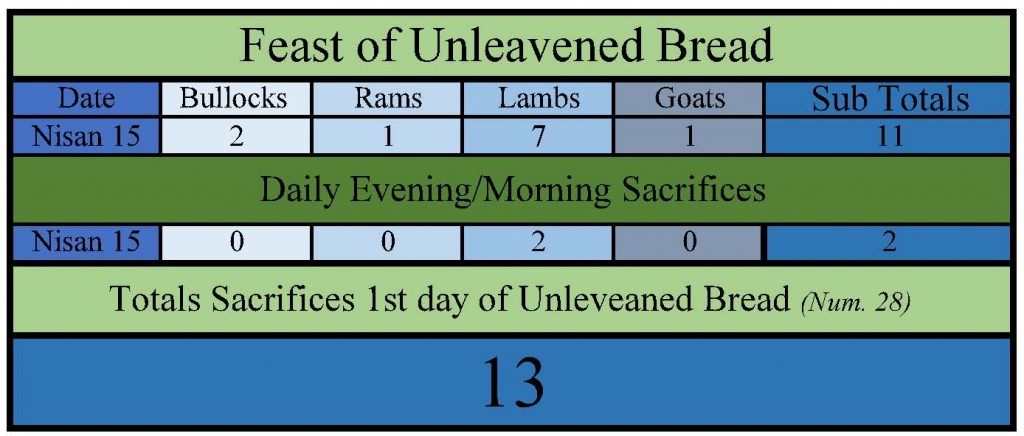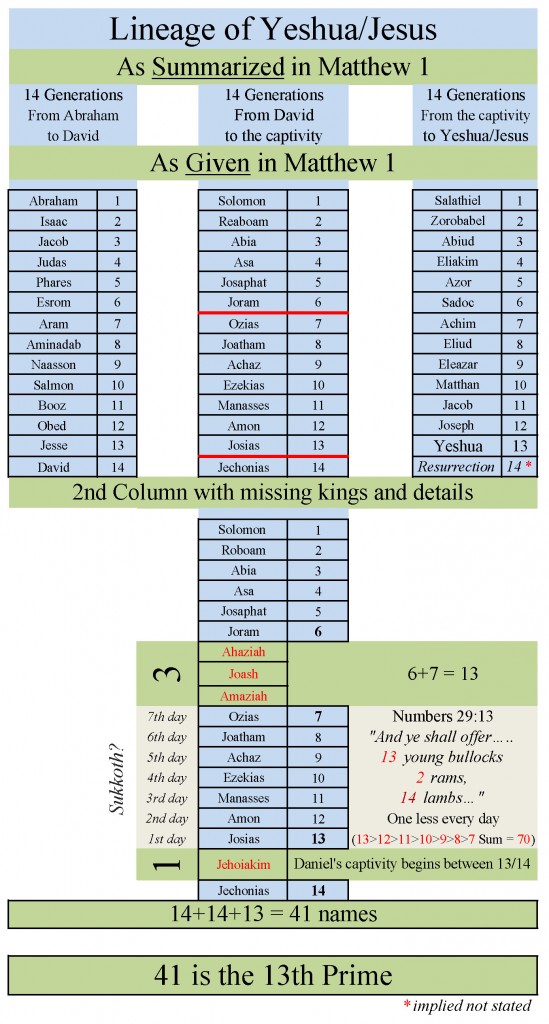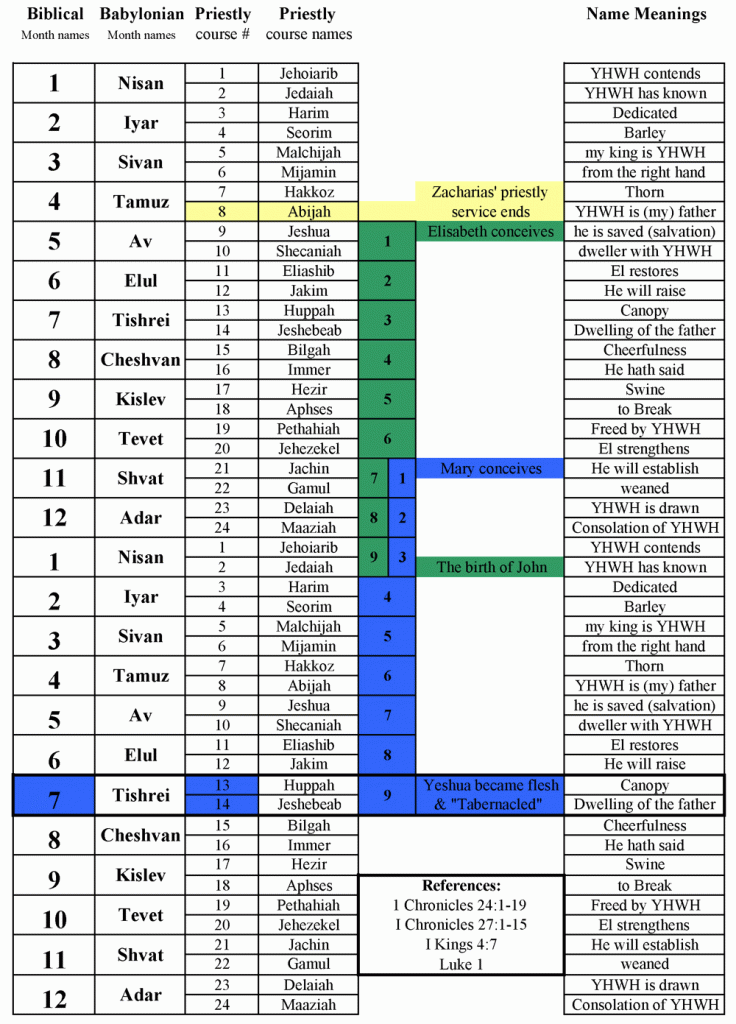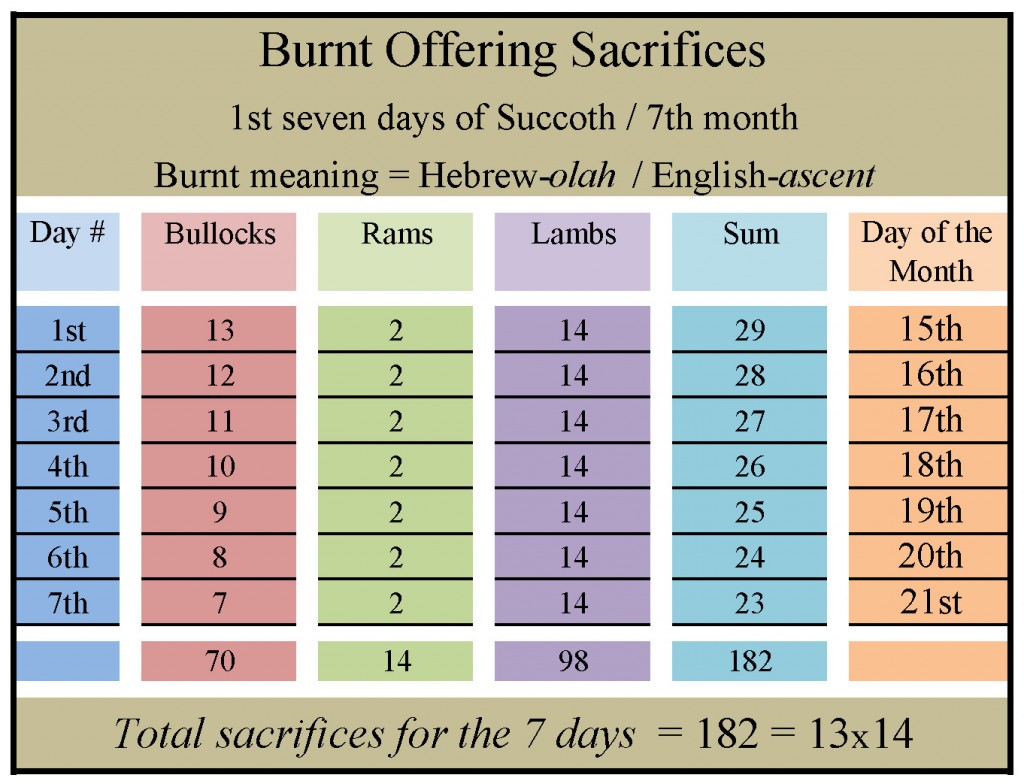This week I have some wonderful information to share with you about Daniel 9 and the prophecy of 70 Sevens. I guarantee that after reading this article you’ll never look at Daniel 9 the same way again. My real hope though is that by the time you’ve finished this article you’ll have a new and fuller understanding of Yahweh’s redemptive plan for mankind and how richly He has woven that redemptive thread throughout the Biblical record. I hope you are prepared for an amazing adventure in Yahweh’s words. To begin lets talk about the power of words.
Words are powerful!
But have you ever thought about what makes them powerful?
Words are powerful because they convey meaning, right? But meaning alone doesn’t make words powerful. Words are powerful when they are arranged in specific ways to convey thoughts, emotions, and ideas. If we dig even deeper, we realize the same about the letters that make up those words. Letters are merely symbols (with meaning) which we arrange to make words.
Let me give you an example of why words, even though individually they have meaning, are only truly powerful when arranged with an intent to express thoughts or ideas. See if the following words have any noteworthy meaning to you.
Spot saw nor I never moor a in of how I the certain
I heather the saw given as spoke know
the with if visited a never were be what god never looks
I and heaven I charts yet am wave the sea yet.
While each of these words in the above sentence has a meaning, as they are currently arranged, they certainly are not what we would consider powerful or moving. In fact, as a whole they do not make much sense at all. Now take a look at those same words as they were arranged by the poet Emily Dickinson:
Chartless
I never saw a moor,
I never saw the sea;
Yet know I how the heather looks,
And what a wave must be.
I never spoke with God,
Nor visited in heaven;
Yet certain am I of the spot
As if the chart were given.
– Emily Dickinson
As you can see those are some powerful words once they have been imbued with order. That is what I want to talk about today – the order and design of words in the Bible.
Did you know that the Hebrew authors of the Old Testament were masters at arranging words to make powerful literary statements? Scholars have long realized that many passages in the Bible have been arranged in specific ways to bring meaning to the text. For example, many passages of the Bible are arranged a chiastic pattern. Chiasm refers to a crosswise arrangement of concepts or words that are repeated in reverse order. This chiastic arrangement of the text allows the author to emphasis important parts of the passage in an artistic and more meaningful way.
Psalm 119 is a classic example of another literary devices used by Hebrew wordsmiths. This 22 stanza Hebrew poem is ordered acrostically. Each stanza beginning with a Hebrew word whose first letter is one of the 22 letters of the Hebrew alphabet (arranged alphabetically). Further each stanza is exactly 8 verses. In total there are 1063 words to Psalm 119. There are 533 words in the first 11 stanzas and 530 words in the second. The numerical center of this Psalm is the three words of verse 88b which in English translates to:
“so shall I keep the testimony of thy mouth.”
This three Hebrew word statement situated in the exact middle (530+3+530) of Psalm 119 perfect summarizes what this Psalm is all about. Now that is a powerful numerical and literary statement! For more on the numerical arrangement of Psalm 119 I’d encourage you to read Casper Labuschagne’s logotechnical analysis of Psalm 119 here: Psalm 119
You see the Hebrew authors not only arranged many of the Biblical passages chiastically and poetically, but in some instances, they also structured them numerically to emphasize a word, verse, a larger passage, or an idea. As Casper Labuschange and others have demonstrated, many of the books of the Bible have a distinctive numerical structure which their authors used to emphasize their divine authorship.
Biblical scholars have noted that the Jewish scribes who painstakingly copied the Hebrew text meticulously counted the verses, words, and letters of the Hebrew Bible. As demonstrated by the Leningrad Codex, these summations were noted in margins of the text. One particularly interesting feature of these scribal notes is that they noted the exact numerical center word and often the letter of the Biblical books and even some passages. The significance of this has been debated but as demonstrated with Psalm 119 there is often a numerically structured design to the books of the Bible and many of its passages that focuses on the center of the passage.
If you think about it this propensity to mark the numerical center of a Hebrew passage, it could be seen as a type of encryption key which locked in the number of words in the particular passage in question because that numerical center was fixed relative to the entire passage. Just one wrong letter or word would change the entire numerical structure of the text. This precise layout of the Hebrew text also makes it hard for those who claim the Hebrew text of the Bible was corrupted to make their case. In a way you could look at as Yahweh’s way of numerically sealing the books and passages of the Bible.
In the modern era this numerical analysis of the Old Testament is in its nascent stages of rediscovery. I only recently stumbled upon this logotechnical analysis of the Hebrew Bible after reading an article by Israel Kohl on Academia.edu entitled: Solving the Mystery of Genesis 49:10b? – The Numerical Key. That article argued that the controversy surrounding Genesis 49:10b might be solved by looking at the overall numerical structure of the text. Professor Kohl’s makes his argument to good effect. In his article he referenced Casper Labuschange and his work. Mr. Labuschagne extensive research into the numerical structure of the Bible can be found at his website: Casper Labuschagne or at this Academia.edu page here: casperlabuschagne.academia.edu/research For what it is worth Mr. Labuschange would probably be considered a “liberal” scholar and does not share a “fundamentalist” (as he calls it) view of the Scriptures. Nevertheless, his work provides compelling evidence that the Hebrew MT text of the Scripture was intentionally designed to glorify Yahweh the living God of the Bible.
A Numerical (logotechnical) Analysis of Daniel 9
For those of you who have read my book The 13th Enumeration, I’ve long believed that the numbers 13 and 14 have special significance related to the Bible’s messianic message. Specifically, I’ve proposed that these numbers were incorporated into the Bible in order to show that Yeshua (Jesus) of Nazareth was the Bible’s promised Messiah. In fact, I’ve shown that a reasonable case can be made that these numbers identify Yeshua as the Bible’s prophesied Messiah and that they can be used to calculate the coming of the Messiah as prophesied in Daniel 9 and its 70 Sevens prophecy.
What I didn’t know until this past month is that Daniel 9 is designed to emphasize the numbers 7 & 13 (and their derivatives 14 & 26) in relation to the 70 Sevens Prophecy. Last week I shared with you a chart of 100 Hebrew words arranged into 49+2+49 word groups. I asked if any of you could tell me its significance. Some of you correctly identified the chart as Daniel 9:22-27. As you can see below the 13 & 14 words of verse 25 (the center verse) of that 100 words 5 verse passage were the words 70 Sevens (49). So like Psalm 119 and many other passages in the Bible, Daniel 9:22-27 was arranged to emphasize the very heart of the prophecy of 70 Sevens. But that’s not all that is special about Daniel 9. (A special thanks to NR for providing me with the English translation for the Hebrew words):
Please note the following chart is read right to left.
In this article I want to share with you something truly special about how Daniel 9 in general and the prophecy of 70 sevens in particular was arranged by the prophet Daniel under what I have to believe is divine inspiration, in order to provide you and me with the basis to prove that Yeshua (Jesus) of Nazareth was the Bible promised Messiah.
Let’s start by looking at the numerical structure of Daniel 9 and its use of the numbers 7 & 13 in the Daniel’s efforts to show that the prophecy of 70 Sevens was of divine origins. Based upon the work of Labuschagne and others this exploration also shows how the numerical center of Daniel 9 provides the pivot around which the entire chapter is organized. Further this organization brings to light the incredibly complex and intricate nature of the passage.
To start with Daniel 9, as given in the Hebrew (MT) text, has 462 words. The 18 words of verse 15 are the exact numerical center of this passage. There are 222 words before Daniel 9:15 and 222 words after. Daniel 9:15 reads as follows:
Daniel 9:15
5 And now, O Lord our God,
that hast brought thy people forth out of the land of Egypt
with a mighty hand, and hast gotten thee renown,
as at this day; we have sinned, we have done wickedly.
Thematically, Daniel 9:15 is the climax of Daniel’s confession and admission of guilt on behalf of himself and his people. Daniel opens his moving intercessory prayer in verse 4 with a plea for YHWH to remember his “covenant and mercy to them that love him and keep his commandments”. This “covenant and mercy” is a direct quote from Deut. 7:9 and Moses’ admonitions to Israel before they were to cross over into the promised land.
It’s important to note for the sake of context here, that Moses’ “covenant and mercy” is a reference to the oath (shabuwa’) YHWH swore (shaba) with Abraham in Genesis 22:16. This was the first recorded oath sworn with any man in the Bible.
Also note that the Hebrew word sware (shaba) is phonetically identical to the word seven (sheba). This has led some Bible commentators to acknowledge that Yahweh’s oath with Abraham could rightly be called a swaring of sevens. (For more on this please see my article: Seven, 70, & Sevens: Daniel 9 & the Bible’s Messianic Symbolism)
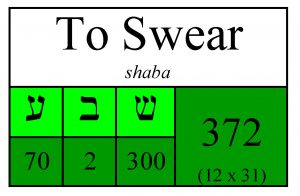 Daniel’s
Daniel’s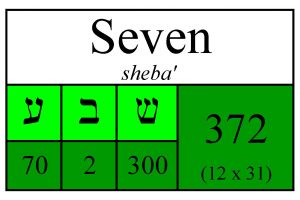 confessions on behalf of his people reaches its final climactic admission of guilt in verse 15 with the words “we have sinned, we have done wickedly”.
confessions on behalf of his people reaches its final climactic admission of guilt in verse 15 with the words “we have sinned, we have done wickedly”.
After verse 15, Daniel shifts his pleadings to YHWH from admissions of their collective guilt, to a petition for unmerited mercy and forgiveness. Verse 21 acknowledges that while Daniel was still in prayer the angel Gabriel came to answer Daniel’s petition with a prophecy of 70 Sevens. So with that general overview of the passage, we can now dig into the author’s arrangement of the passage.
In the chart below you can see that once the numerical center of Daniel 9 is acknowledged the passage then naturally organizes into three 7 verse groups and a final five verses in which the angel Gabriel’s gives a 14 words introduction followed by the prophecy of 70 Sevens.
It’s fascinating, I dare say mind boggling, the obvious effort that went into the design of this passage. Its verses are arranged into groups of 7+7+1+7+5. As becomes apparent each 7 verse grouping has its own numerical center of 13 (or 2×13) groups of words.
The Proper Name of YHWH in Daniel 9
The three 7 verse groupings also have another unique characteristic in common. They are the only places where the proper name of YHWH is found in the entire book of Daniel. YHWH is used 8 times in the book of Daniel and all 8 occurrences are found in Daniel 9 in one of the 7 verse groups, each of which have a numerical center of 13 or 26 (2×13) words – numbers which underline the numerical structure of YHWH’s name. Of these eight occurrences, 2 occurrences are found in the first 7 verses of Daniel 9. Five occurrences are found in the 2nd grouping of 7 verses of Daniel 9, and the final occurrence of YHWH is found in verse 20 in the final grouping of seven verses.
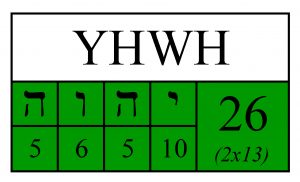 Using a symbolic flourish, the author bookends or seals the use of the name of YHWH by numerically highlighting the first and last usage of the name. The first occurrence of YHWH is the 13th word of Daniel 9:2. The last occurrence of YHWH in Daniel 9 is found in verse 20 and again it is the 13th word of that verse as well. The 4th occurrence of YHWH in Daniel 9 is the 4th word of verse 10 which itself has 13 words. This occurrence of YHWH is also the 130th word of the chapter 9.
Using a symbolic flourish, the author bookends or seals the use of the name of YHWH by numerically highlighting the first and last usage of the name. The first occurrence of YHWH is the 13th word of Daniel 9:2. The last occurrence of YHWH in Daniel 9 is found in verse 20 and again it is the 13th word of that verse as well. The 4th occurrence of YHWH in Daniel 9 is the 4th word of verse 10 which itself has 13 words. This occurrence of YHWH is also the 130th word of the chapter 9.
The name YHWH is used three times (5th, 6th, 7th) in a unique 15-word pattern running through verses 13 and 14. There the first and last occurrence of the name is separated by 13 words and the 2nd and 3rd occurrences are each 7th successive words from the next. In other words, it is written: (YHWH + 6 + YHWH + 6 + YHWH). Again, this pattern bridges the 13th and 14th verses of the chapter.
Finally, the 6th and 7th usage of the name are the 206th and 213thwords of the passage. Call it a coincidence, if you will, but the numbers 206 and 113 both remind the reader of the divine name numbers of YHWH. Even discounting some of these usages as coincidental, there is sufficient reason to see an effort by Daniel in Daniel 9 to emphasize the name of YHWH and its numerical basis in the number 13.
The Numerical Middle of the 7 Verse Groupings
Next let’s turn our attention to the Daniel’s use of 13 and 26 as the numerical centers of the 7-verse groupings as described in the following chart.
Once again, the Daniel’s amazing efforts are on bold display. The numerical center of the first 7 verses of Daniel 9 are the 13 words in which Daniel pleads with YHWH to remember his “covenant and mercy to them that love him, and to them that keep his commandments.”
Daniel 9:4
….and made my confession, and said, O Lord, the great and dreadful God,
keeping the covenant and mercy
to them that love him, and to them that keep his commandments;
This 13-word numerical center begins with the 49th word of Daniel 9:23-27 – thus again linking the numbers 13 & 49. Those 13 words are proceeded by 48 words and are followed by the same. (48+13+48)
To repeat, this “covenant and mercy” mentioned by Daniel is a quote taken from Deut. 7 and Moses’ admonitions to Israel before entry into the promised land. Note also, that Deut. 7:7-12 (quoted below) mentions the “mighty hand” of YHWH which brought Israel out of Egypt – the very same sentiments highlighted by the numerical center of Daniel 9. So, we can see that Daniel is framing his plea for Israel’s deliverance in terms that shadow Israel’s Exodus from Egypt.
Further, a close reading of Deut. 7-9 reveals that Moses’ mention of YHWH’s “covenant and mercy” (as mentioned above) finds its source in the oath (shabuwa’) that YHWH personally sware (shaba) with Abraham in Geneses 22:16. (see also Gen. 26:3-4, Deut. 9:5, Luke 1:67-80, Acts 3:25-26, Hebrews 6:13-20) This oath which promised, in part, that through Abraham’s seed “all nations of the earth would be blessed”.
While this oath with Abraham was seen from an Old Testament perspective as primarily a promise of Israel’s national restoration, the New Testament authors saw the fulfillment of this oath, primarily as a restoration of Israel’s spiritual fortunes through the Messiah and only after this spiritual restoration would come the fulfillment of the other promises made to Abraham. This is important to note because the Prophecy of 70 Sevens, found in the final verses of Daniel 9 speak primarily to this redemptive nature of Israel’s future restoration.
Deuteronomy 7:7-12
7 YHWH did not set his love upon you, nor choose you, because ye were more in number than any people; for ye were the fewest of all people: 8 But because YHWH loved you, and because he would keep the oath which he had sworn unto your fathers, hath YHWH brought you out with a mighty hand, and redeemed you out of the house of bondmen, from the hand of Pharaoh king of Egypt.
9 Know therefore that YHWH thy God, he is God, the faithful God, which keepeth covenant and mercy with them that love him and keep his commandments to a thousand generations; 10 And repayeth them that hate him to their face, to destroy them: he will not be slack to him that hateth him, he will repay him to his face. 11 Thou shalt therefore keep the commandments, and the statutes, and the judgments, which I command thee this day, to do them.
12 Wherefore it shall come to pass, if ye hearken to these judgments, and keep, and do them, that YHWH thy God shall keep unto thee the covenant and the mercy which he sware unto thy fathers:
Genesis 22:16-18
6 And said, By myself have I sworn, saith YHWH, for because thou hast done this thing, and hast not withheld thy son, thine only son: 17 That in blessing I will bless thee, and in multiplying I will multiply thy seed as the stars of the heaven, and as the sand which is upon the sea shore; and thy seed shall possess the gate of his enemies; 18 And in thy seed shall all the nations of the earth be blessed; because thou hast obeyed my voice.
The 2nd Seven
The 2nd seven verse group also has a numerical center of 13 words. Here there are 50 words before and 50 words after the numerical center. Just as the numerical center of the 1st seven verse group harkened back to words of Moses, so do these 13 words. They are as follows:
Daniel 9:11-12
…because we have sinned against him.
And he hath confirmed his words, which he spake against us,
and against our judges that judged us,..
The context here are the words of YHWH as given through Moses. They related to the curses pronounced upon Israel by Moses if they departed from YHWH’s righteous instructions. Daniel is acknowledging their deserved nature.
As demonstrated, both of these 13-word numerical centers find their context in the words of YHWH through Moses. To emphasis this Moses is mentioned just before and just after this center point. Here is the fuller context:
Daniel 9:11-13
11 Yea, all Israel have transgressed thy law, even by departing, that they might not obey thy voice; therefore the curse is poured upon us, and the oath that is written in the law of Moses the servant of God, – – – because we have sinned against him. 12 And he hath confirmed his words, which he spake against us, and against our judges that judged us, – – – by bringing upon us a great evil: for under the whole heaven hath not been done as hath been done upon Jerusalem. 13 As it is written in the law of Moses, all this evil is come upon us: yet made we not our prayer before the YHWH our God, that we might turn from our iniquities, and understand thy truth.
The 3rd Seven Verse Grouping
The final seven verse grouping are verses 16-22. The numerical center are the 26 (2×13) words that bridge verses 18-19. In this passage there are 48 words before and 48 words after (48+26+48). They are as follows:
Daniel 9:18-19
…for we do not present our supplications before thee for our righteousnesses,
but for thy great mercies.
O Lord, hear; O Lord, forgive; O Lord, hearken and do;
defer not, for thine own sake, O my God…. called by thy name.
[note here the reading in English is not exactly the same as in Hebrew. To get the full sense of the passage and its order it is better to read the Hebrew provided at the bottom of this paper.]
There are several neatly congruent things about this passage. First, these 26 words have their own numerical center. That center is the 13 & 14 words “O Lord hear”. (12+2+12) These two words begin a uniquely emphatic triplet phrase of petition,
“O Lord, hear; O Lord, forgive; O Lord, hearken and do…”
Another neat aspect of this passage is now that we are on the back side of the 18-word numerical center of Daniel 9:15 (the numerical center of the entire chapter), Daniel is petitioning YHWH to remember his people, sanctuary, and city – not because Israel deserves it, but rather for YHWH’s righteous name sake. Here are verses 18-19 in full. Notice the emphasis on YHWH’s holy name:
Daniel 9:18-19
O my God, incline thine ear, and hear; open thine eyes, and behold our desolations, and the city which is called by thy name: for we do not present our supplications before thee for our righteousnesses, but for thy great mercies. 19 O Lord, hear; O Lord, forgive; O Lord, hearken and do; defer not, for thine own sake, O my God: for thy city and thy people are called by thy name.
 You have to admit, it is incredibly congruent in light of the Daniel’s emphasis on “the name” in this seven verse grouping that He makes the numerical center of this passage 26 words in length. As most know the proper name of YHWH has a Hebrew letter numerical value of 26.
You have to admit, it is incredibly congruent in light of the Daniel’s emphasis on “the name” in this seven verse grouping that He makes the numerical center of this passage 26 words in length. As most know the proper name of YHWH has a Hebrew letter numerical value of 26.
Further adding to the congruency, is just as the numerical center of the first seven verses appealed to YHWH to remember his “covenant and mercy”, these 26 words also emphasize the importance of that plea by not just pleading for YHWH’s mercy but His forgiveness as well.
Summary of the Seven
In summary, by acknowledging the 18 words of Daniel 9:15 as the numerical center of Chapter 9, the three groups of seven verses stand out as individual mini-themes in their own right. Further each of these passages have their own numerical center emphasizing the particularly important aspect of the seven verses in which they are centered. All three of these three 7-verse groupings build to the coming revelation of the 70 Sevens prophecy.
- The heart of the first seven verses called to remembrance YHWH’s “covenant and mercy” – that oath of sevens which He sware with Abraham in Gen. 22:16.
- The 2nd seven verses confess the individual and national guilt of Israel.
- The final group of seven verses requests YHWH divine intervention.
The final 5 verses of chapter 9 then provide YHWH’s answer to Daniel. Let’s look at the response Daniel received in light of its numerical structure.
The Prophecy of 70 Sevens
Now we turn to the final 5 verses of Daniel 9 and the prophecy of 70 Sevens as given by Gabriel to Daniel. If we looked at the first 22 verses of Daniel 9 as “the problem” the final five verses represent the solution. Daniel’s people were captives in Babylon, Jerusalem was destroyed, and YHWH’s house desolate. Daniel raises these issues with YHWH, acknowledges the reasons for them and then pleads for YHWH to intervene. The 70 Seven’s prophecy is YHWH’s answer to Daniel.
The passage includes verses 23-27 of chapter 9. Curiously, the word count develops as a countdown of sorts:
Verse 23 = 14 words
Verse 24 = 23 words
Verse 25 = 22 words
Verse 26 = 21 words
Verse 27 = 20 words
These final five verses of Daniel 9 begin in Daniel 9:23 with 14 words. The 13th and 14th word of which are key to “understanding” the prophecy. In English it is as follows:
Daniel 9:23
23 At the beginning of thy supplications the commandment came forth, and I am come to shew thee; for thou art greatly beloved: therefore understand the matter, and consider the vision.
The 14 words which begin Gabriel’s introduction to the prophecy of 70 Sevens start with the Hebrew word techillah (begining) and end with the words biyn mar’eh which means discern/ understand the vision / prophecy. The Hebrew word biyn to discern or understand is the 13th word of verse 23.
We’ve already seen the two numbers 7 & 13 and its factors prominently displayed in the numerical structure of the first 22 verses of Daniel 9 (used alternatively as 14, 49 & 26). As we dig deeper here, it will become more apparent that not only were the numbers 7 and 13 (and their derivatives) an important part of the numerical structure of the first 22 verses but they also appear to be numerical keys that demonstrate the exquisite symbolism of the 70 Sevens prophecy and the means by which we also find a unique numerical solution.
The Numerical Center of the 70 Sevens
So the prophecy opens with an introduction of 14 words, the 13th word of which reminds us to discern or understand the vision. As you can see from the provided charts, the final 5 verses of Daniel 9 are exactly 100 words in length. The numerical center of this passage being the two words shabuwa’ sheba (Sevens 7) found in verse 25.
This numerical center then makes for 49 words before and 49 words after the Hebrew words sheba’ shabuwa’ “7 Sevens” which itself is a representation of 49. In other words, these two words sheba’ shabuwa’ which represent the heart of this prophecy are numerically equal to 49. These words are also the 13th and 14th word of Daniel 9:25 – the central verse of the prophecy.
Solidifying the authors intent to showcase sheba’ shabuwa’ as the heart of this prophecy is the fact that there are also exactly 204 letters before the two words and ten letters that make up sheba’ shabuwa’. There are also exactly 204 letters after this heart of the prophetic passage.
Further showing the design of this prophetic passage was meant to emphasize the word “seven” which begins the numerical center of Daniel 9:23-27, we find that this word is the 50th of the passage and its first letter the 50 letter of verse 25.
This unique occurrence of “seven” in Daniel 9 has the numerical value of 377 or 13×29. This does not seem to be an accident as I’ll explain below. Bringing special attention to this word the Masoretes marked the letter Ayin with an Etnachta. This cantillation mark was used to mark a pause or dividing point in the passage. In this case the letter Ayin under which this mark is used has the numerical value of 70. Obviously, the Masoretes saw some significance to this word and its numerical placement in the text.
Digging Deeper
It worth reiterating here, as partially noted at the beginning of this article, the 13-word numerical center of the first 7 verses of Daniel 9 begins with yadah (confess/praise) – this word is the 49th word of Daniel 9. Incidentally, yadah comes from the root yad which means hand. So, one might see there in the numerical center of this passage, the hand of Daniel raised in supplication for YHWH to remember his oath (shabuwa’) that He the living god of the Bible sware (shaba) with Abraham. This contrasts with the numerical center of the entire chapter of Daniel 9 which acknowledges and calls upon the mighty “hand” of YHWH which delivered Israel out of Egyptian bondage.
13 & 14 in Daniel 9
By now it’s apparent that the numbers 7 & 13 and their derivatives 14 & 26 have a certain prominence and structural significance in Daniel chapter 9. As we’ve seen, this is especially apparent in the fact that the two words 7 Sevens (49) of the numerical center of Daniel 9:23-27 are the 13th and 14th words of verse 25. I believe the significance of this has been underappreciated by scholars.
I’ll explain more of this significance later but to recap, Daniel opens his pleadings with a call for YHWH to remember His “covenant and mercy” – a phrase, which comes by way of Moses, from Gen. 22:16 and YHWH’s “oath” (shewbu’ah) that “by Himself” He sware (shaba) with Abraham, an swaring of sevens if you will, that promised (in part) that through Abraham’s seed “all nations of the earth would be blessed”. Then in answer to Daniel’s pleadings YHWH sends a prophecy of Shibiym Shabuwa’ (70 Sevens) both Hebrew words which find their roots in the Hebrew word Shaba / Shiba (sware / seven) and YHWH’s oath (shaba) with Abraham, the first “swaring of sevens” with any man in the Biblical record. Exquisitely congruent to say the least!
I believe it is important to note here that YHWH’s answer to Daniel’s prayer with the prophecy of 70 Sevens is primarily redemptive in nature. Of the six goals that will be fulfilled by the coming “anointed” one, four are specifically redemptive in nature.
Daniel 9:24 4 Seventy weeks are determined upon thy people and upon thy holy city, to finish the transgression, and to make an end of sins, and to make reconciliation for iniquity, and to bring in everlasting righteousness, and to seal up the vision and prophecy, and to anoint the most Holy.
This redemptive context is important to the numerical symbolism of the Bible in general and Daniel 9 in particular because these numbers -13 & 14 – are intimately connected to the sacrificial redemptive rites given in the Torah. Each month and during nearly every one of the 7 Biblical holy days throughout the year, Israel was required to make atonement with 13 or 14 sacrifices. The following are exemplar.
The Use of 13 & 14 in Daniel 9:23-27
Now let’s look at what happens when we view the prophecy of 70 Sevens through the numerical structural lens of 13 & 14:
- The 13th and 14th words of verse 23 tell us to “discern or understand the vision”.
- The 13th and 14th words of verse 24 emphasize the redemptive nature of the prophecy with the words “atone for iniquity”.
- The 13th and 14th words of verse 25 – “seven sevens” (49) are the numerical center of the prophecy. Both words find their roots in the Hebrew shaba/shiba a “swaring of sevens”. These words are a richly symbolic answer to Daniel’s plea for YHWH to remember His “covenant and mercy” – the oath that He sware with Abraham – an oath that New Testament authors claimed was fulfilled in Yeshua – the promised “seed” through who all nations of the earth would be blessed.
- Counting down from the numerical center and climax of the passage the 13th and 14th word are “cut off anointed” and parallel the OT idea of a suffering servant.
Isaiah 53:4-5
4 Surely he hath borne our griefs, and carried our sorrows:
yet we did esteem him stricken, smitten of God, and afflicted.
5 But he was wounded for our transgressions, he was bruised for our iniquities:
the chastisement of our peace was upon him;
and with his stripes we are healed.
After the numerical center of Daniel 9, the prophecy takes a decidedly negative turn. After the 13th and 14th word of the numerical center mentions “cut off anointed”, there does not seem to be any further numerical significance to these numbers in the prophecy (that I can find).
Daniel 9 and the New Testament book of Matthew
In light of the redemptive nature of Daniel 9 and the symbolism of 13 & 14, one can’t help but think of Matthew’s representation of Yeshua’s (Jesus’) lineage. As described in Matthew 1, there are 14 + 14 + 14 generations from Abraham to Yeshua. As give in the text though, Yeshua is the 14 + 14 +13 generation from Abraham – thus symbolically making Yeshua both the 13th & 14 generation.
This unique arrangement is further emphasized by noticing the location where the author removed 4 kings from Yeshua’s generations. 3 kings are removed between the 6th & 7th generation and 1 king is removed from between the 13th and 14th generation. Incidentally both 6 & 7 and 13 & 14 are cycles representative of the Bible’s lunar/solar calendar. More on the significance below.
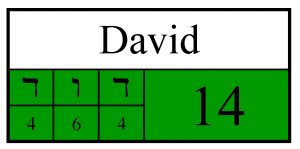 Like the author of Daniel who uses the numbers 7, 13, & 14 to emphasize the divine and redemptive nature of Daniel 9, Matthew uses those very same numbers to represent Yeshua as a descendant of Abraham and David. Matthew seems to have understood the messianic symbolism of Daniel 9 and used that very same symbolism in his opening arguments to prove that Yeshua was the Bible’s promised Messiah.
Like the author of Daniel who uses the numbers 7, 13, & 14 to emphasize the divine and redemptive nature of Daniel 9, Matthew uses those very same numbers to represent Yeshua as a descendant of Abraham and David. Matthew seems to have understood the messianic symbolism of Daniel 9 and used that very same symbolism in his opening arguments to prove that Yeshua was the Bible’s promised Messiah.
A New Testament Perspective
It is worth noting here that from a New Testament perspective there are strong grounds to believe that Matthew saw in Yeshua of Nazareth a fulfillment of the prophecy of Daniel. Aside from the symbolic parallels between the lineage of Yeshua in Matthew 1 and the numerical structure of Daniel 9, the Biblical calendar, and the Bible sacrificial rites, a reasonable chronological case could also be made that Yeshua’s birth fulfilled the statement of Daniel 9:25a.
Daniel 9:25
Know therefore and understand, that from the going forth of the commandment
to restore and to build Jerusalem unto the Messiah the Prince
shall be seven weeks,
This countdown to the Messiah begins with a “commandment” to restore and build Jerusalem. Interestingly, the English word “commandment” comes from the Hebrew dabar. Dabar is used 1439 times in the Old Testament and of those, the vast majority refer to the “dabar” or word of YHWH the living God of the Bible.
In Daniel 9 dabar is used four times including the instance in Daniel 9:25. Excluding Daniel 9:25 the other three occurrences clearly refer to the words of YHWH (Dan. 9:2, 12, 23). For comparison here is the 3rd and 4th occurrence of the word dabar in Daniel 9:
Daniel 9:23
At the beginning of thy supplications the dabar (commandment) came forth…
Daniel 9:25
Know therefore and understand, that from the going forth of the dabar (commandment) to restore and to build Jerusalem…
Surprisingly few Biblical scholars today consider the possibility that Daniel 9:25 refers to the word (dabar) of YHWH despite the contextual use of the word in the Bible in general and its use in Daniel 9 in particular. This oversight is especially problematic because we have a specific and datable dabar of YHWH to restore and build Jerusalem given through the prophets Haggai and Zechariah and witnessed by Ezra 6:14:
This dabar of YHWH commanded the Jewish people to return and build YHWH’s holy sanctuary., the very beating heart of the city of Jerusalem. If there was one de facto event that marked the return and building of Jerusalem then it would have been YHWH’s house, the very event that Daniel interceded for in his prayer to YHWH in Daniel 9:17.
Daniel 9:17
17 Now therefore, O our God, hear the prayer of thy servant, and his supplications, and cause thy face to shine upon thy sanctuary that is desolate, for the Lord’s sake.
Ezra 6:14
14 And the elders of the Jews builded, and they prospered through the prophesying of Haggai the prophet and Zechariah the son of Iddo. And they builded, and finished it, according to the commandment of the God of Israel….
Zechariah 1:7, 16
Upon the four and twentieth day of the eleventh month, which is the month Sebat, in the second year of Darius, came the word of YHWH unto Zechariah, the son of Berechiah, the son of Iddo the prophet, saying,…..
Therefore thus saith YHWH; I am returned to Jerusalem with mercies: my house shall be built in it, saith YHWH of hosts, and a line shall be stretched forth upon Jerusalem.
Both Haggai 1 and Zechariah 1 date YHWH’s divine “word” to return and build the Temple to year 520 BC. For the sake of argument, let’s assume that Matthew saw in this divine decree the starting point of Daniel’s 70 Sevens countdown to the Messiah.
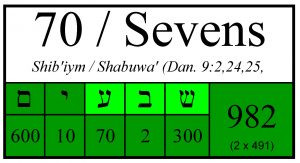 Now that we have the starting point (terminus a quo) in 520 BC, verse 25 states that it would be “Sevens 7” (Hebrew is read from right to left). It should be noted here that most scholars assume Hebrew reads sheba (7) shebuwa’ (sevens) but this assumption is based upon the Masoretic vowel pointings which were added over a thousand years later.
Now that we have the starting point (terminus a quo) in 520 BC, verse 25 states that it would be “Sevens 7” (Hebrew is read from right to left). It should be noted here that most scholars assume Hebrew reads sheba (7) shebuwa’ (sevens) but this assumption is based upon the Masoretic vowel pointings which were added over a thousand years later.
As given, the Hebrew (without vowel pointings) would have read Seventy 7 (shib’iym sheba). Literally 490 periods of time. So, in other words, from the dabar of YHWH until the coming of the anointed prince there were 490 periods of unspecified time.
Keep in mind here the numerical center of the prophecy was the 13th and 14th words of Daniel 9:25. Scholars have long acknowledged the curious fact that prophecy of 70 Sevens does not specify the units of time the prophecy was to be measured in. Many evangelical scholars see that unit of time as a “prophetic” year of 360 days. Others see a year of 365.24 days. Still other see a jubilee period of time.
These units of time aside, one must ask how the Jewish people to whom this prophecy was given might have calculated time. Most scholars acknowledge that the Biblical calendar was lunar/solar. The solar side of the calendar regulated the day. As mandated by the Torah, these days were arranged into a cycle of 6 & 7 days. Six days of labor and a day of rest. There were 52 (4×13) cycles of these in a year.
The other half of the Biblical calendar, (the lunar side of the calendar) regulated the various Biblical holydays throughout the year, as demonstrated in the charts above, each of these holydays had mandated sacrificial rites which often included 13 or 14 sacrifices. Because the lunar side of Israel’s calendar was regulated by the moon and its 29.53 days lunar cycle, each month there were two cycles of 13 or 14 waxing days of (visible) light followed by the same 13 or 14 days of waning (visible) light. Each month through the centuries these cycles of waxing and waning light were the means by which the Israelites kept “time” and marked events on their religious calendar.
So one might argue that “time” in the Bible was not a certain number of days, but rather a certain number of lunar cycles. Most years it was 12 lunar cycles of 29.54 days each for a “year” of 354.36 days. Every 3 years or so though, a Biblical intercalary year of 13 lunar cycles of 29.53 days was needed to rebalance the Biblical calendar. This intercalary “year” was 383.89 days.
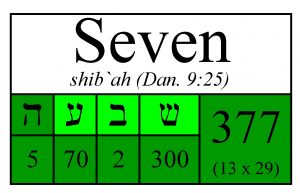 With these facts in mind it would not be unreasonable to entertain the idea that the Jewish people might have considered the 70 Sevens units of “time” in the Bible as a “year” of 12 or 13 lunar cycles.
With these facts in mind it would not be unreasonable to entertain the idea that the Jewish people might have considered the 70 Sevens units of “time” in the Bible as a “year” of 12 or 13 lunar cycles.
Curiously the 13th word of verse 25 is “seven”. This unique occurrence of the Hebrew word sheba in Daniel 9 – right in the numerical center of the prophecy – believe it or not, has a numerical value of 377. The factor of which are the prime numbers 13 and 29 – the very factors that delineate a 13 month Biblical “year”.
Summary
To summarize, the 13 words of Daniel 9:25 tell of a dabar to restore and build Jerusalem. A contextual Biblical case can be made that this dabar was the word of YHWH given through the prophets Haggai and Zechariah in the year 520 BC. Further, this 13 word Hebrew passage tells that the “anointed prince” will come after 70 seven. The 13th word of this passage is a unique occurrence of the Hebrew word sheba or seven (unique to Daniel 9). This unique occurrence of sheba in Daniel 9 has the numerical value 377 and the factors of 13 & 29. These factors being the very root of a 13th month Biblical year of 383.89 days.
By the way the Hebrew word Sevens (Shabuwa’) in Daniel 9:27 has a numerical value of 383. Which as demonstrated above is the number of days in 13 month Biblical (lunar) year.
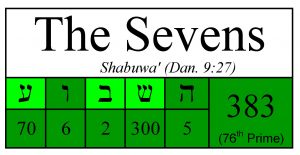 Using a 13th month year of 383.89 days multiplied by 70 seven or 490 periods of time gives 515.05 solar years. From the terminus a quo in 520 BC, theoretically this places the coming of the anointed prince in the year 5 or 4 BC. It doesn’t take much imagination to see why the New Testament authors would have seen in Daniel 9:25 a fulfillment in Yeshua of Nazareth who by many conservative estimates was born in 4 BC and thus would have been conceived in 5 BC.
Using a 13th month year of 383.89 days multiplied by 70 seven or 490 periods of time gives 515.05 solar years. From the terminus a quo in 520 BC, theoretically this places the coming of the anointed prince in the year 5 or 4 BC. It doesn’t take much imagination to see why the New Testament authors would have seen in Daniel 9:25 a fulfillment in Yeshua of Nazareth who by many conservative estimates was born in 4 BC and thus would have been conceived in 5 BC.
In Conclusion
Daniel 9 and the Prophecy of 70 Sevens was uniquely designed to highlight the “divine” numbers 7 & 13 – numbers which are intimately woven into the Biblical calendar and its sacrificial rites. The New Testament’s belief that Yeshua (Jesus) was the promised Messiah appears to have both a chronological and symbolic connection to the prophecy of 70 Sevens found in Daniel 9. This connection likely contributed to the early New Testament’s basis for their belief that Yeshua (Jesus) was the promised Messiah.
For a more in-depth explanation of Daniel 9 and the Prophecy of 70 Sevens you can download my free book: Daniel’s 70 Weeks: The Keystone of Bible Prophecy at the following link: Free Book Download Please note my books at this download link are several years old and do not reflect my latest research on the prophecy of 70 Sevens such as this present article.
Maranatha!
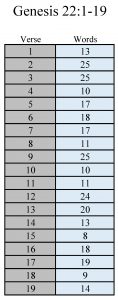 A Treasure Hunt for Next Time
A Treasure Hunt for Next Time
For those of you who like to dig deeper on your own I have a special challenge for you. As this article demonstrated, the numerical center of the first 7 verses of Daniel 9 is a reference to “covenant and mercy” of YHWH – a quote that comes from Gen. 22:1-19 by way of Moses in Deu. 7. This covenant and mercy was but a reference to the first oath Yahweh swore with any man in the Bible. An oath which promised in part that through Abraham’s “seed” all nations of the earth would be blessed. A promise which the New Testament authors clearly demonstrates as being fulfilled in Yeshua.
Yahweh willing my next article will take a look at the numerical structure of Genesis 22:1-19 to see what Biblical treasures we can find. To give you a hint of how amazing this passage is there are a total of 307 words which tell of Abrahams willingness to sacrifice Isaac – and his faith that He and Isaac would return home. A faith that was rewarded by YHWH with an oath that promised through Abraham’s “seed” all nations of the earth would be blessed. This wonderful messianic picture of YHWH “providing Himself a lamb” has long been seen as a foreshadowing of Yeshua.
The numerical center of this passage is a single word – a name. See if you can figure out who’s name is highlight by the numerical arrangement of the text. There are 153 words before this name and 153 after. The first verse of Genesis 22 has 13 words in it and the last verse of this passage (v. 19) has 14 words. Believe it or not!
So see if you can figure out how the author of this passage organized it to highlight its redemptive message. I hope you enjoy the treasure hunt.
For Further Reflection
Its also worth mentioning that Yeshua and His twelve disciples made 13. Later when Yeshua called Paul as the apostle to the Gentiles this made 14.
Paul and the Middle Wall of Partition
As the apostle to the gentiles, Paul in his epistle to the Ephesians described Yeshua and his work at Calvary as breaking down the “middle wall of partition”. This “wall” was built to keep the gentiles from entering the temple proper and by extension the presence of Yahweh. Only the Jewish people had access through this wall. In a symbolic picture par excellence it is fascinating to note that during Paul’s and Yeshua’s era that middle wall was access by 14 steps and 13 gates:
Ephesians 2:13-14
13 But now in Christ Jesus ye who sometimes were far off are made nigh by the blood of Christ. 14 For he is our peace, who hath made both one, and hath broken down the middle wall of partition between us;
Click on images to enlarge

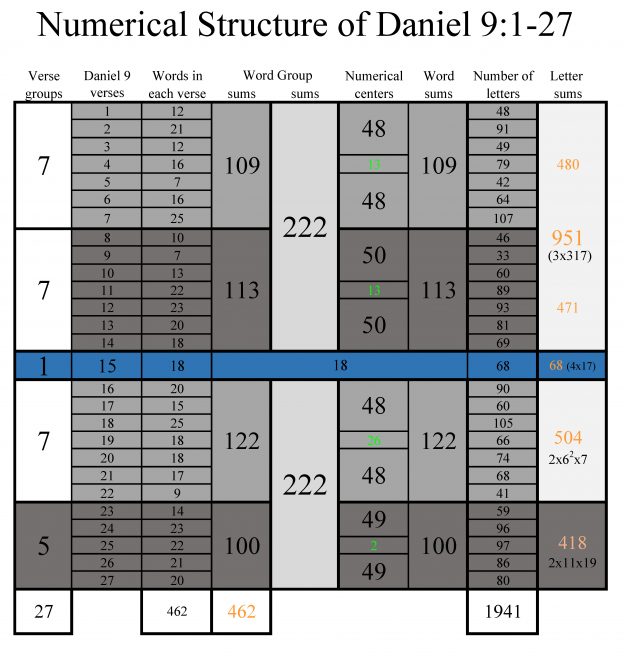
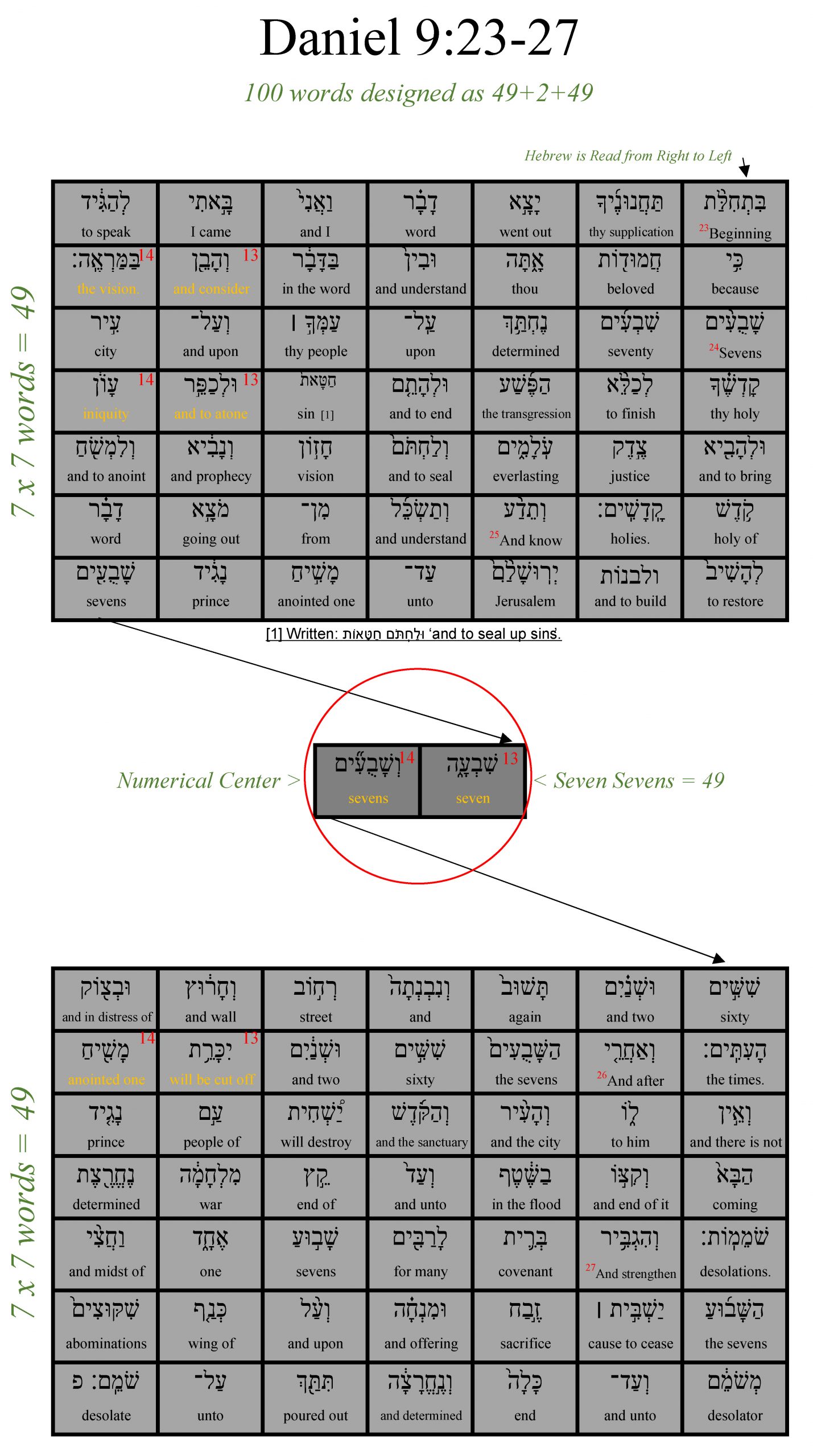
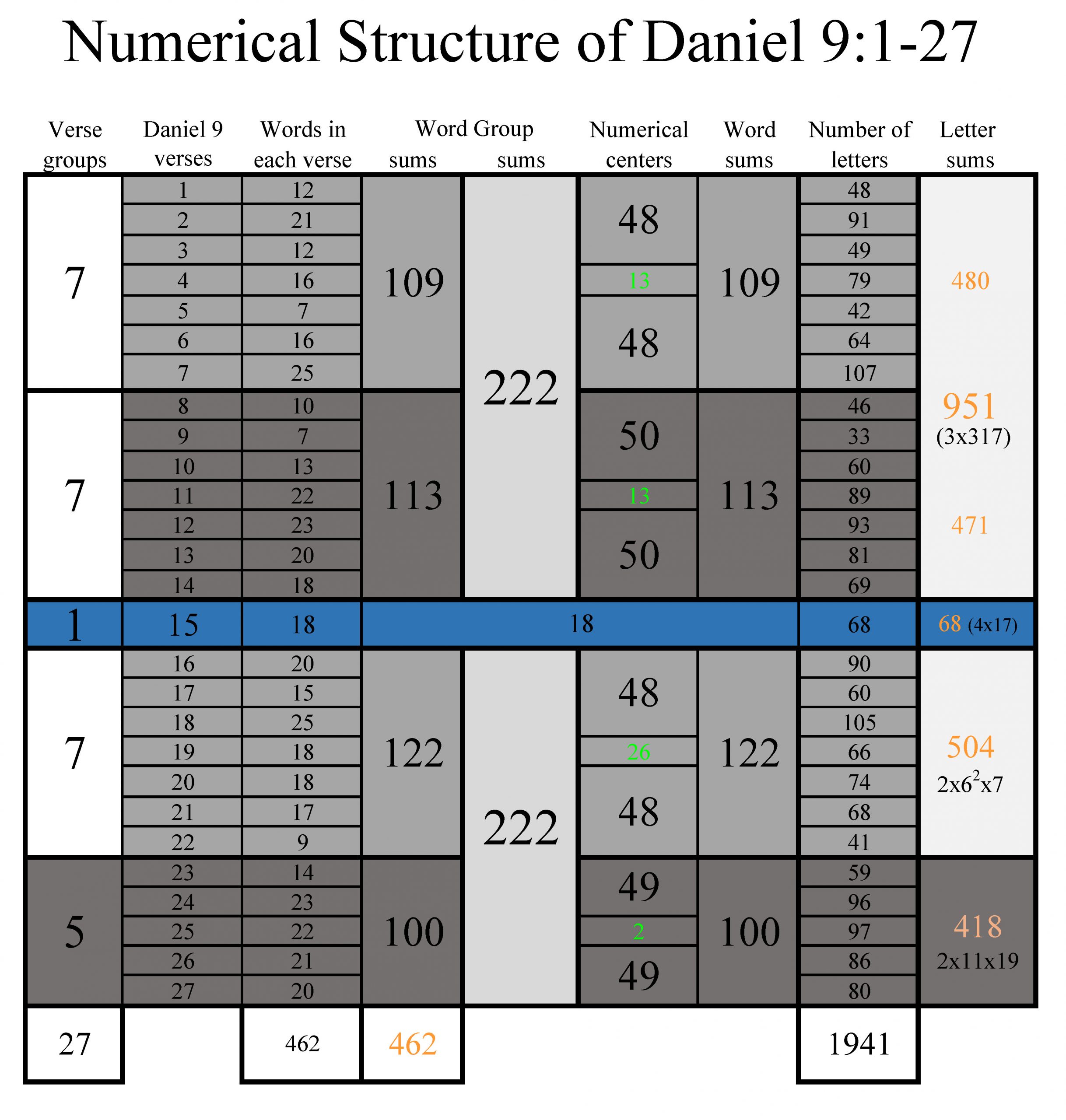

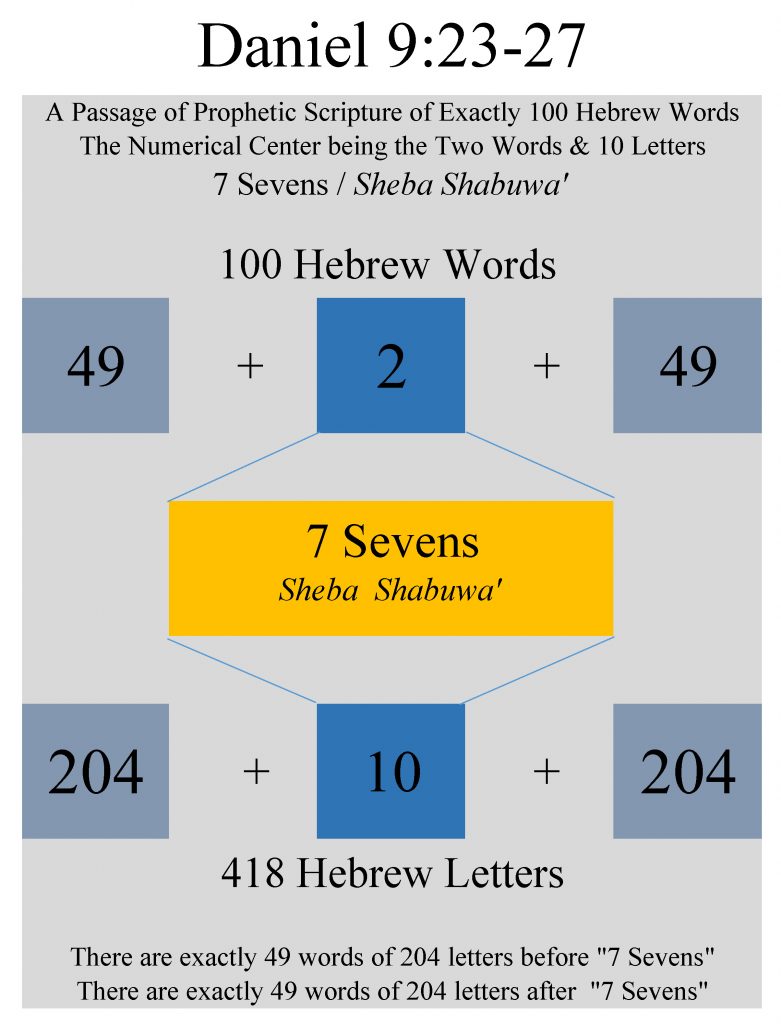

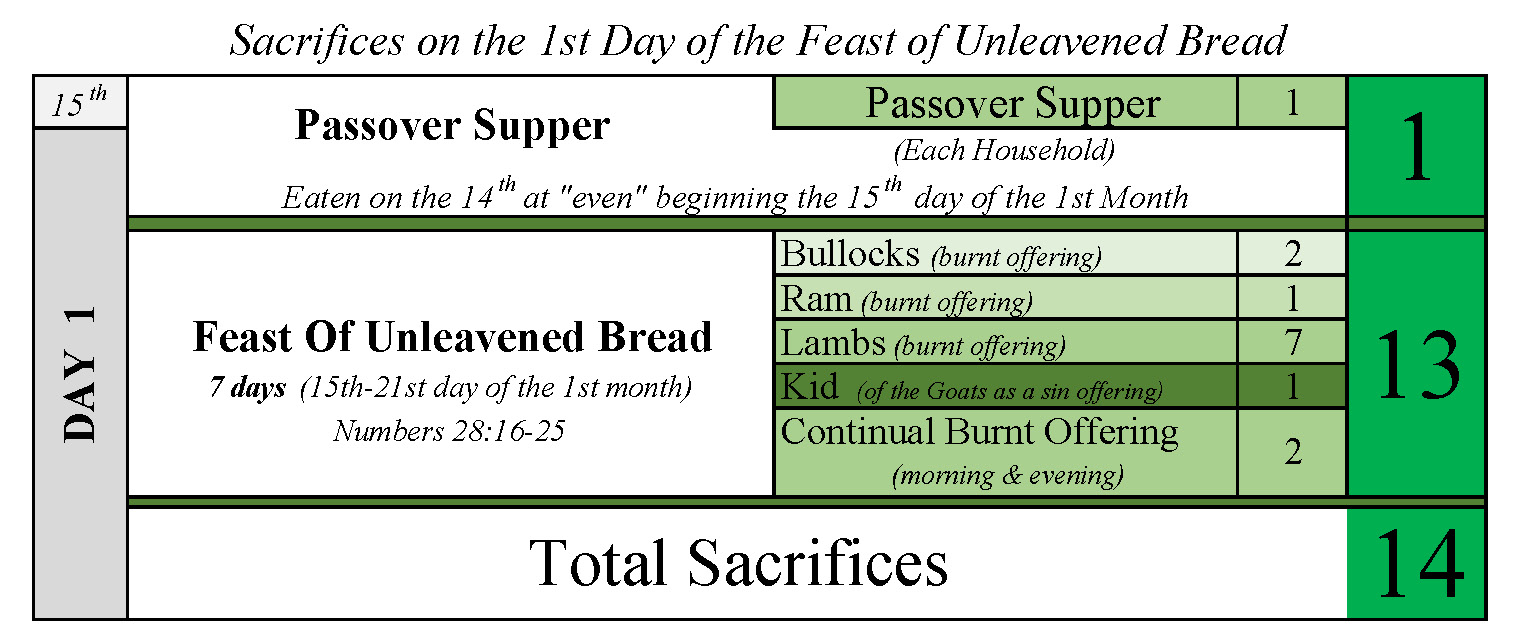







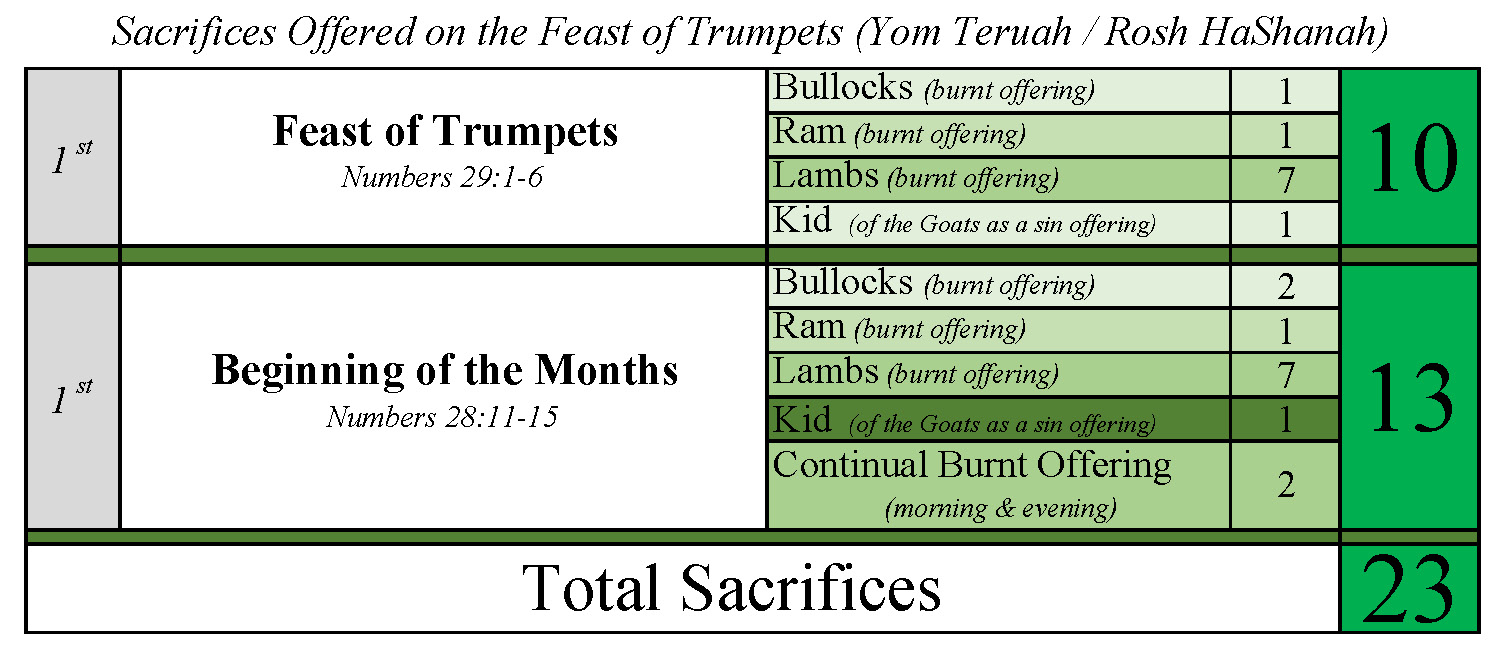

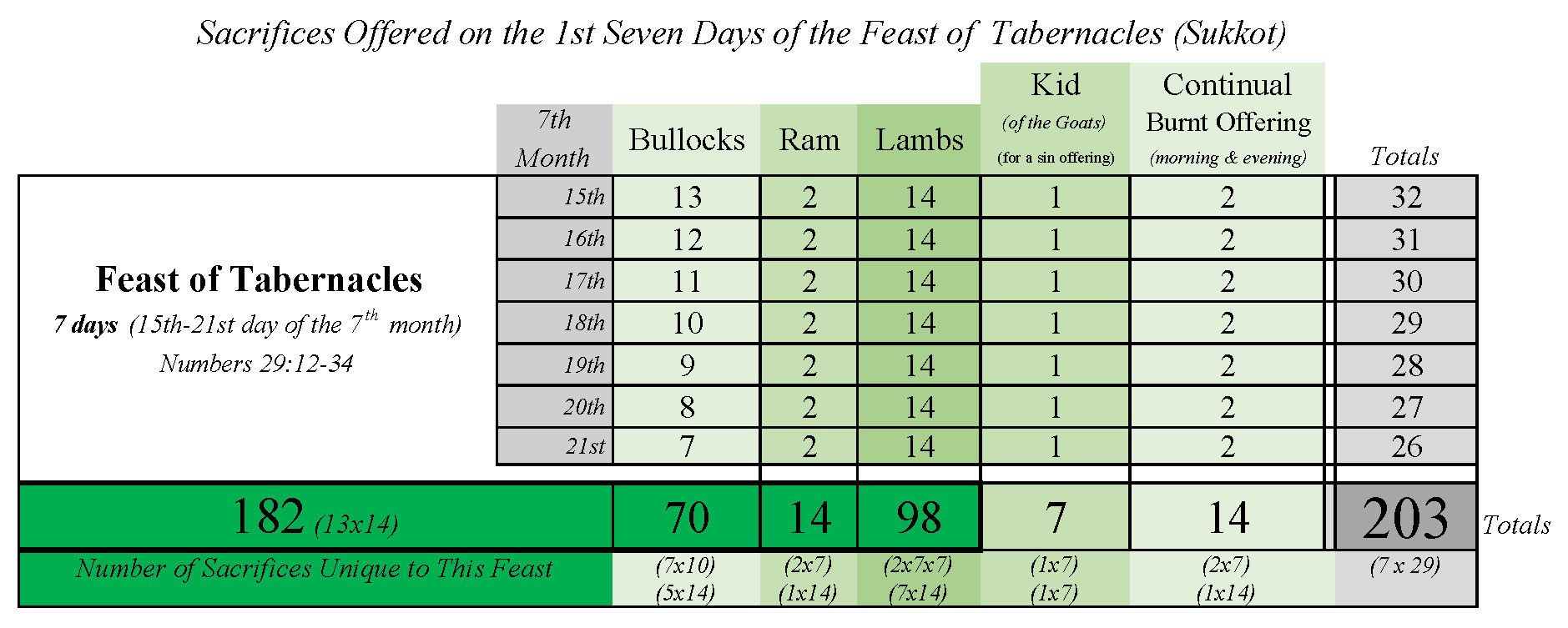

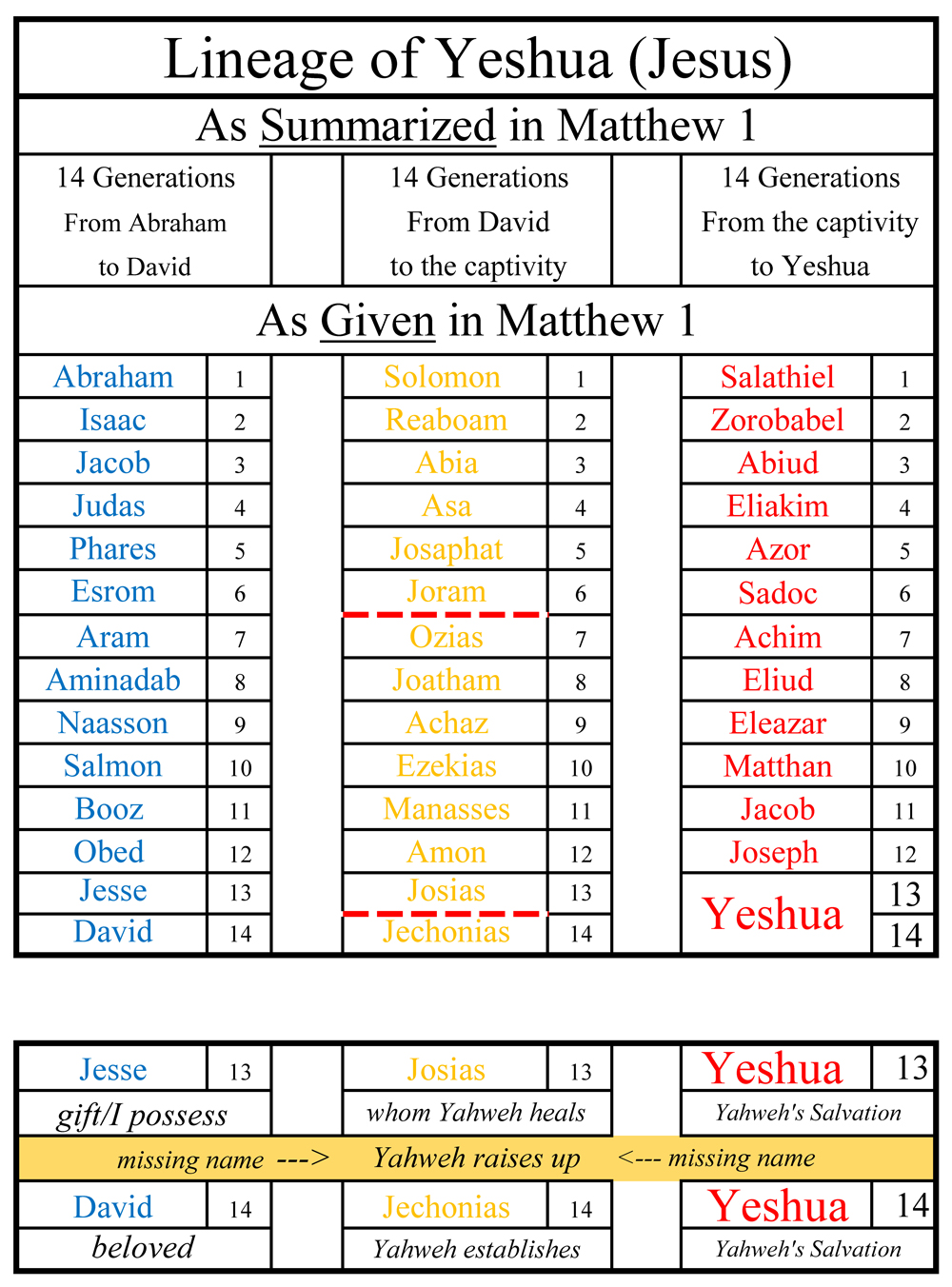
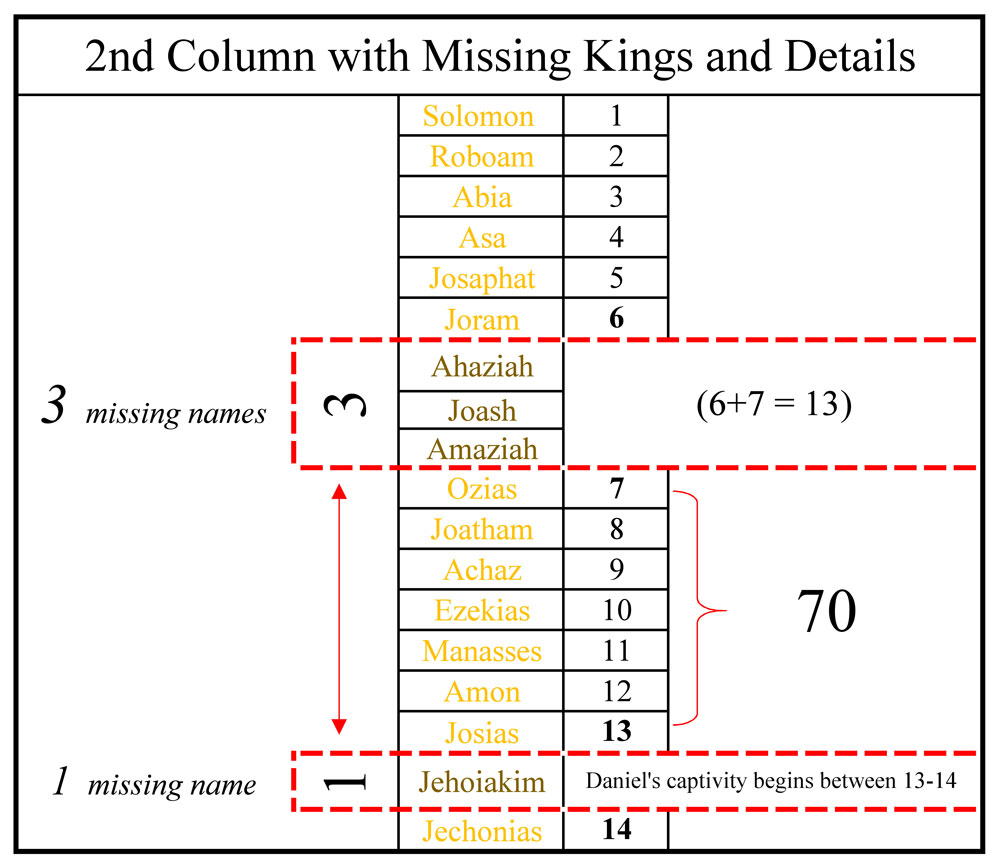
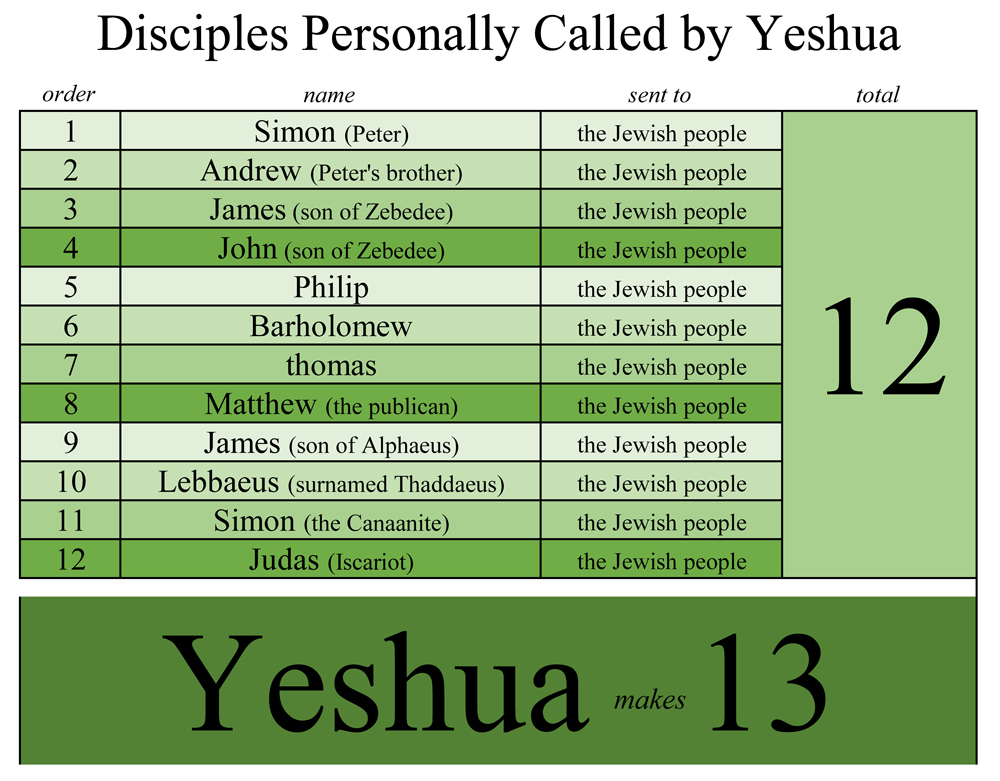
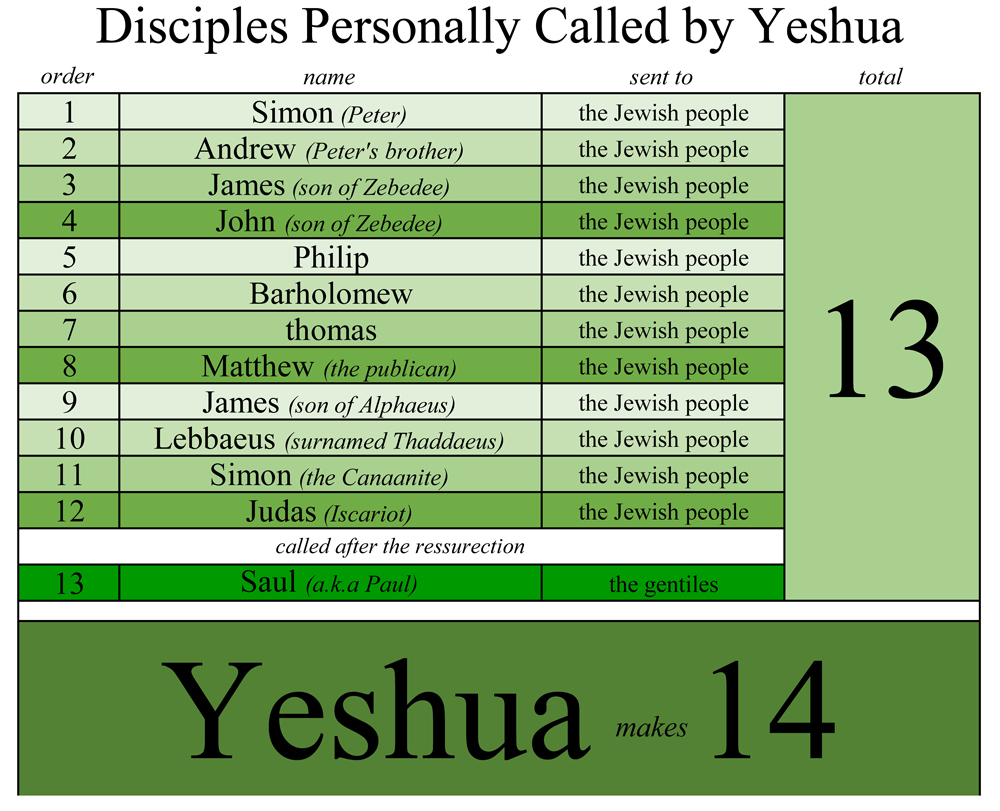
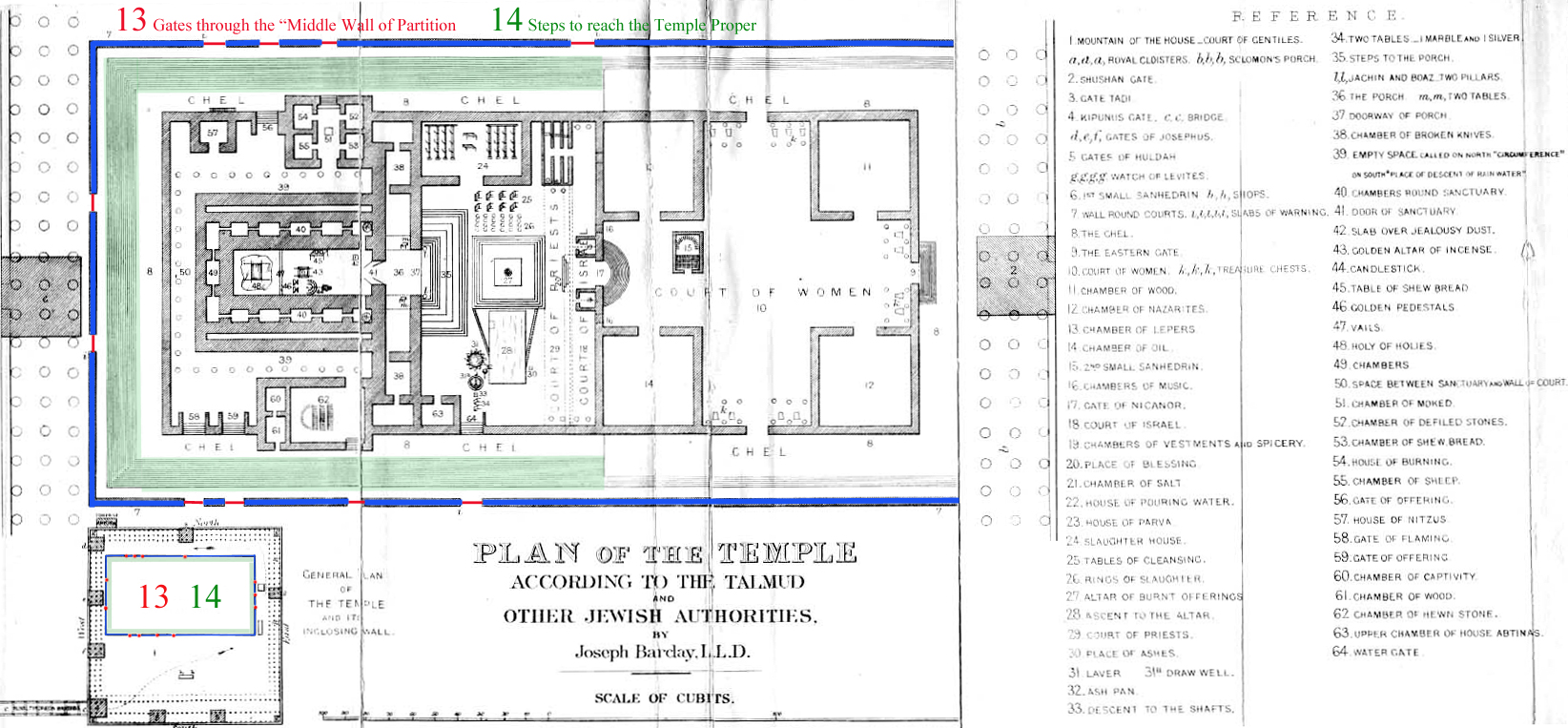
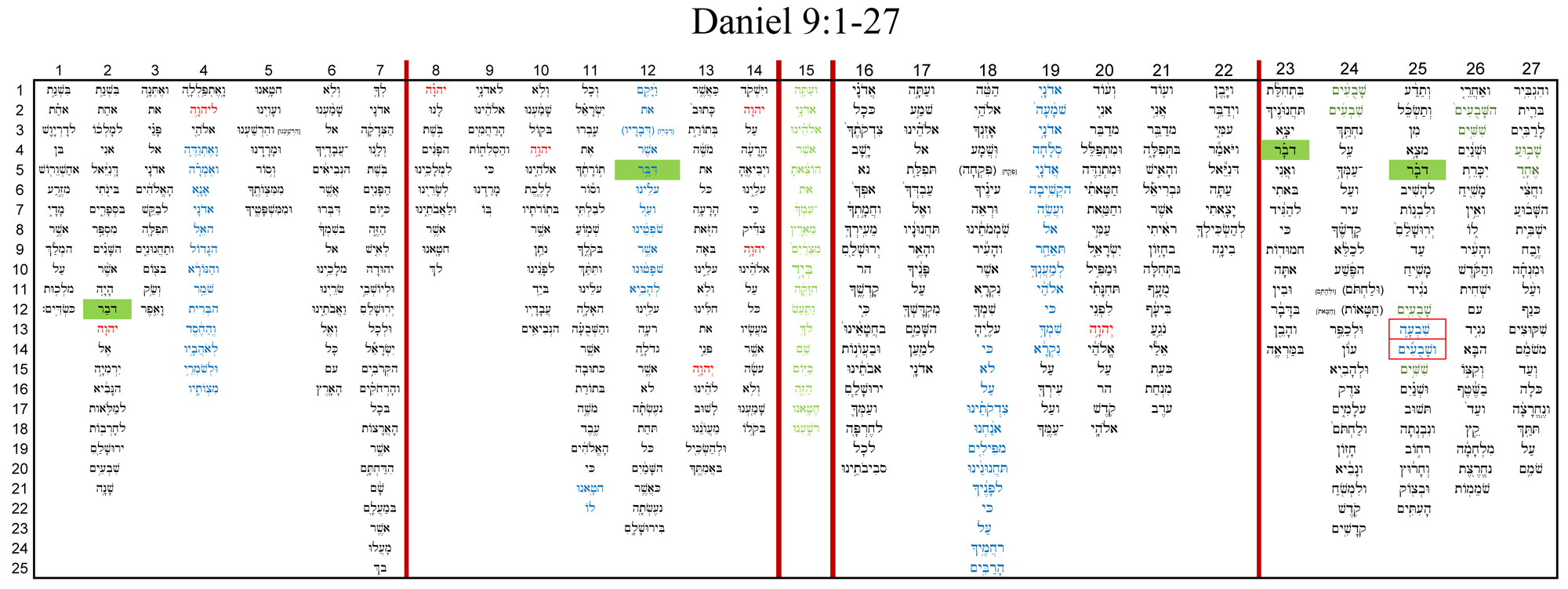
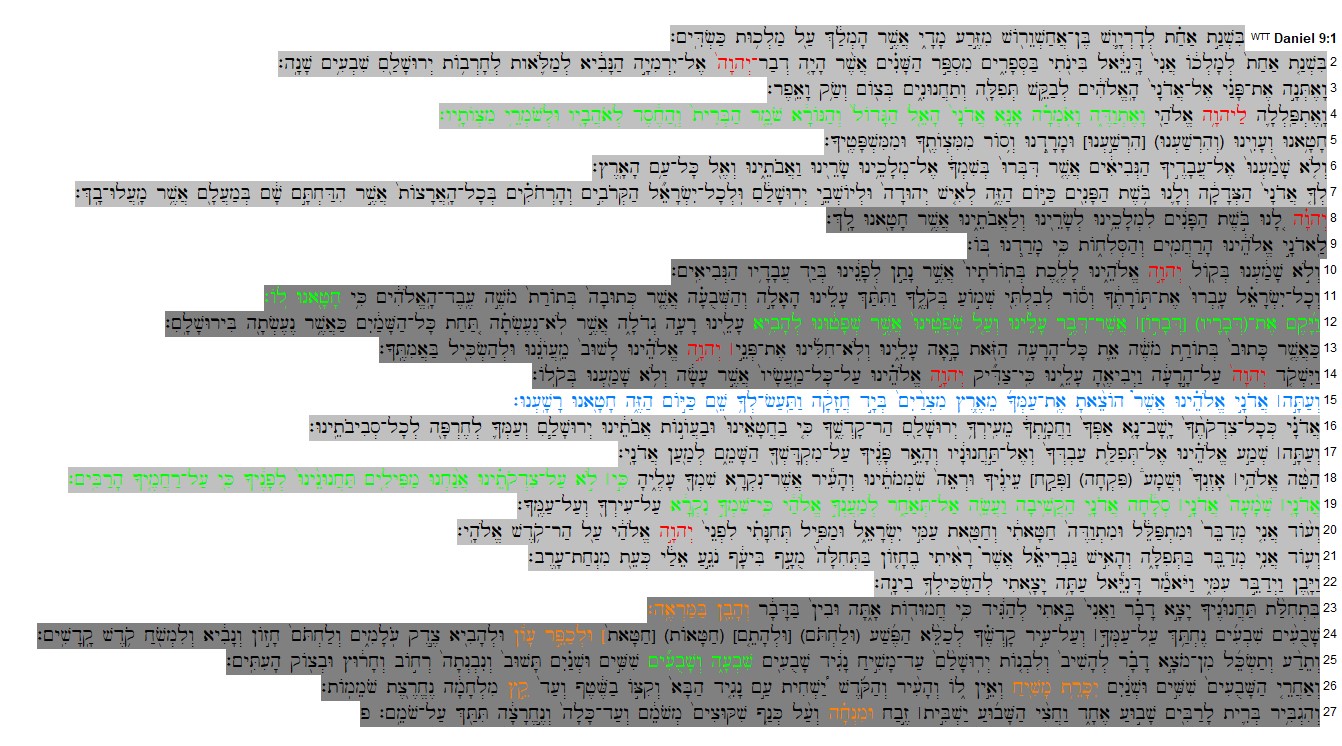
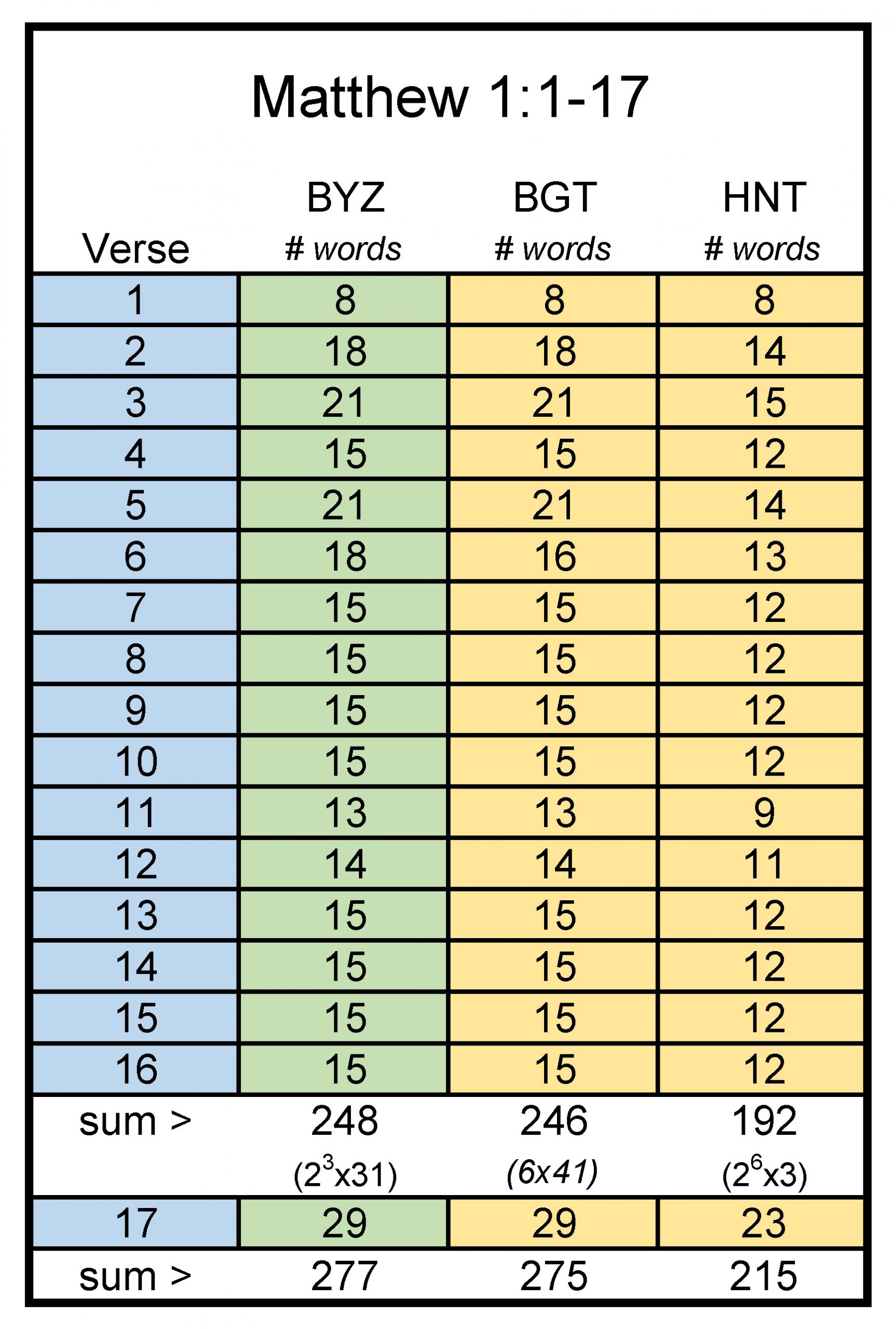
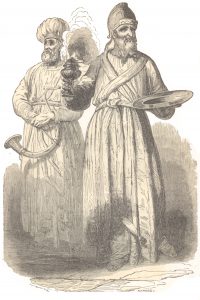
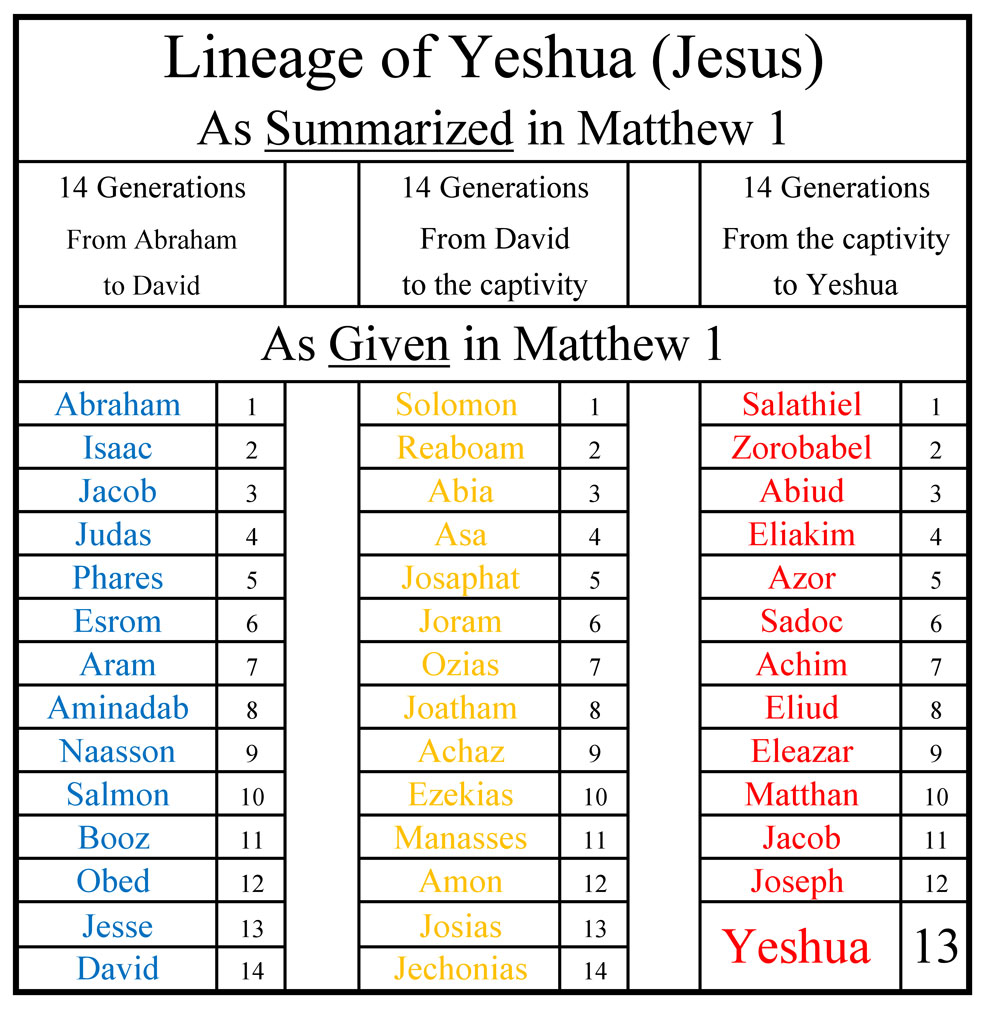
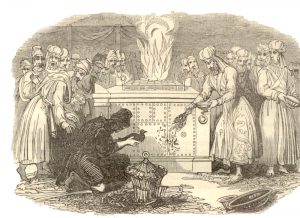
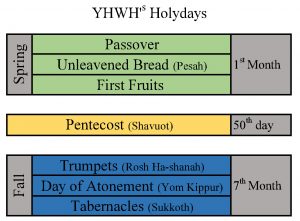

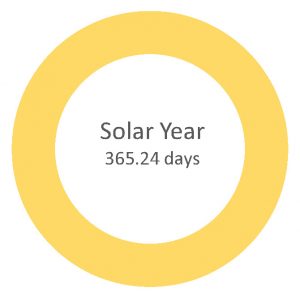
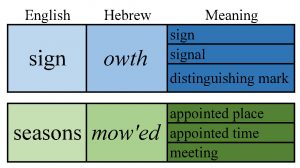
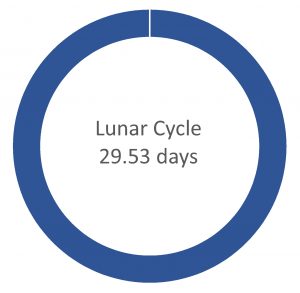
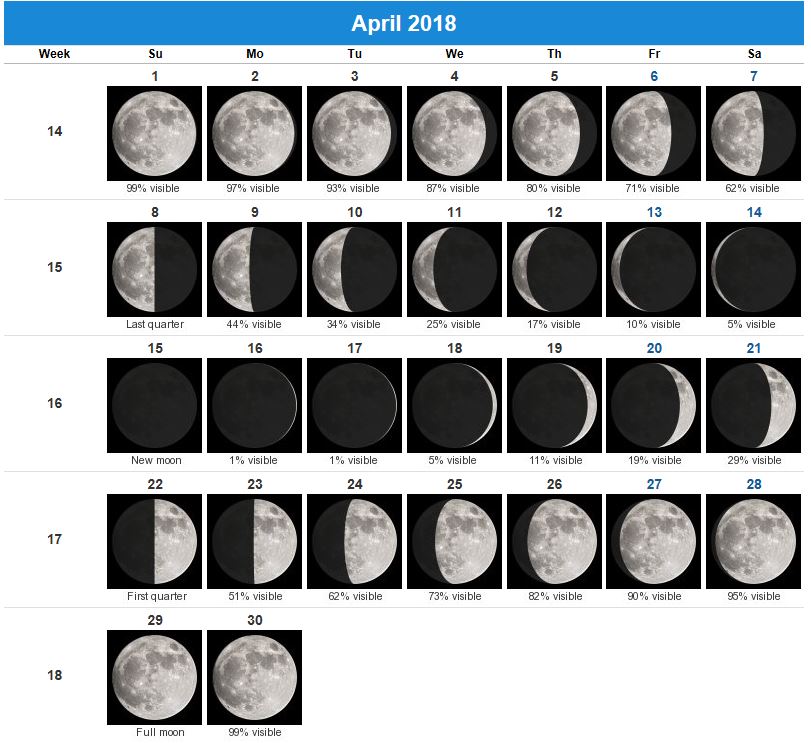
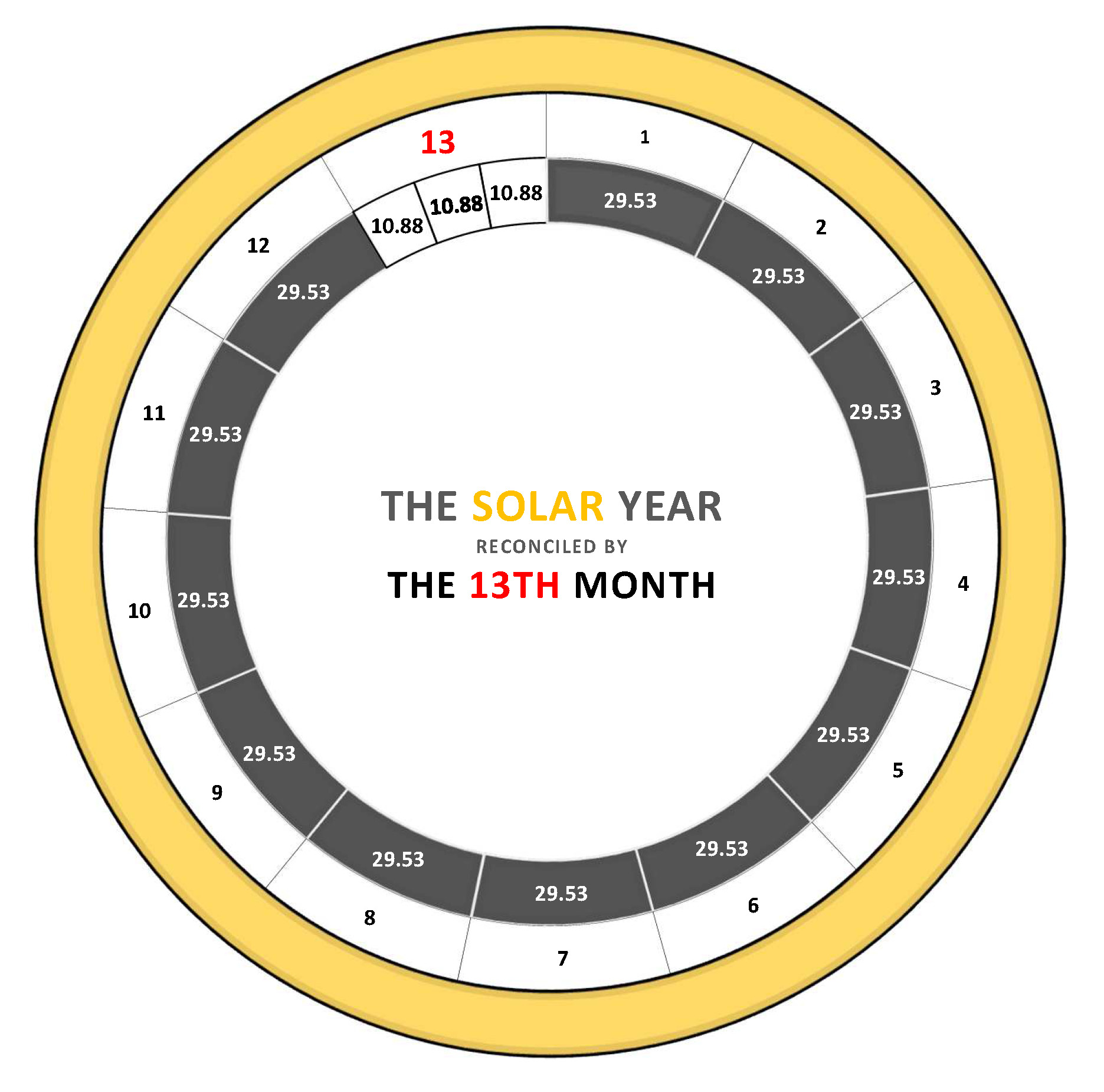
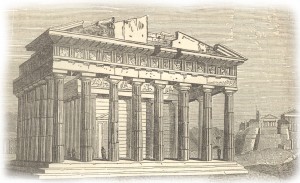 Are you superstitious? Whenever I think about superstitions I can’t help but think of the Apostle Paul and his speech to the men of Athens. By all accounts, Paul was quite a character. I can just picture him standing on the ancient Areopagus (Mars Hill) of Athens nearly two thousand years ago calling out to those gathered at the famous altar to the Unknown God:
Are you superstitious? Whenever I think about superstitions I can’t help but think of the Apostle Paul and his speech to the men of Athens. By all accounts, Paul was quite a character. I can just picture him standing on the ancient Areopagus (Mars Hill) of Athens nearly two thousand years ago calling out to those gathered at the famous altar to the Unknown God: